| jump_all | jump_back | jump_next | jump_random | fig_id | title | instructor | credits | extra | reserved | class1_subjectcourse | class1_title | class1_meeting | class1_ethnic | class1_gened | class1_breadth | class1_level | class1_honors | class1_credit | class1_classnumber | class2_subjectcourse | class2_title | class2_meeting | class2_ethnic | class2_gened | class2_breadth | class2_level | class2_honors | class2_credit | class2_classnumber | class3_subjectcourse | class3_title | class3_meeting | class3_ethnic | class3_gened | class3_breadth | class3_level | class3_honors | class3_credit | class3_classnumber | class4_subjectcourse | class4_title | class4_meeting | class4_ethnic | class4_gened | class4_breadth | class4_level | class4_honors | class4_credit | class4_classnumber | fig |
|---|---|---|---|---|---|---|---|---|---|---|---|---|---|---|---|---|---|---|---|---|---|---|---|---|---|---|---|---|---|---|---|---|---|---|---|---|---|---|---|---|---|---|---|---|---|---|---|---|---|---|
| all | previous | next | random | 2 | Body, Mind, Spirit, and the Yoga Tradition | Chris Livanos | 9 | Integrated Liberal Studies 110 | Body, Mind, Spirit, and the Yoga Tradition | LEC 2: TR 11:00–12:15 + W 8:50–9:40 | Humanities | Elementary | 3 | 41360 | Religious Studies 102 | Exploring Religion in Sickness and Health | LEC 1: MW 12:05–12:55 + DIS 301: R 9:55–10:45 | Humanities or Social Science | Elementary | 3 | 29506 | Nutritional Sciences 203 | Introduction to Global Health | LEC 1: TR 2:30–3:45 | Social Science | Elementary | 3 | 20789 | 25fig02 | |||||||||||||||||||||
| all | previous | next | random | 3 | Childhood Challenges: How Psychology Helps | Kristin Shutts | 9 | Psychology 212 | Childhood Challenges: How Psychology Helps | LEC 1: TR 2:30–3:45 | Social Science | Elementary | 3 | 46636 | Sociology 170 | Population Problems | LEC 1: TR 9:55–10:45 + DIS 301: M 12:05–12:55 | Ethnic Studies | Social Science | Elementary | 3 | 38881 | Gender and Women’s Studies 103 | Gender, Women, Bodies, and Health | LEC 1: MW 11:00–11:50 + DIS 306: F 12:05–12:55 | Natural Science | Elementary | 3 | 29262 | 25fig03 | ||||||||||||||||||||
| all | previous | next | random | 4 | Children and Youth in a Changing World | Jessica Calarco | 10 | Sociology 196 | Children and Youth in a Changing World | LEC 4: TR 9:30–10:45 | Social Science | Elementary | 3 | 43236 | Communication Arts 250 | Survey of Contemporary Media | LEC 1: R 2:25–3:15 + DIS 305: T 4:35–5:25 | Humanities | Elementary | 3 | 23084 | Sociology 134 | Sociology of Race and Ethnicity in the United States | LEC 4: MWF 12:05–12:55 + DIS 386: T 2:25–3:15 | Ethnic Studies | Social Science | Elementary | 4 | 39194 | 25fig04 | ||||||||||||||||||||
| all | previous | next | random | 5 | Children and Media | Karyn Riddle | 9 | Journalism and Mass Communication 176 | Children and Media | LEC 14: TR 11:00–12:15 | Social Science | Elementary | 3 | 39200 | Educational Policy Studies 210 | Youth, Education, and Society | LEC 1: MW 9:55–10:45 + DIS 302: F 9:55–10:45 | Ethnic Studies | Social Science | Elementary | 3 | 37374 | Communication Arts 250 | Survey of Contemporary Media | LEC 1: R 2:25–3:15 + DIS 302: T 2:25–3:15 | Humanities | Elementary | 3 | 23081 | 25fig05 | ||||||||||||||||||||
| all | previous | next | random | 6 | Children, Marriage, and the Family | Harry Brighouse | 10 | Philosophy 104 | Children, Marriage, and the Family | LEC 2: TR 4:00–5:15 + W 1:20–2:10 | Humanities or Social Science | Elementary | 3 | 46391 | Sociology 120 | Marriage and Family | LEC 1: TR 9:30–10:45 + DIS 302: T 1:20–2:10 | Social Science | Elementary | 4 | 27897 | Gender and Women’s Studies 103 | Gender, Women, Bodies, and Health | LEC 1: MW 11:00–11:50 + DIS 312: F 1:20–2:10 | Natural Science | Elementary | 3 | 29267 | 25fig06 | |||||||||||||||||||||
| all | previous | next | random | 7 | Climate Crisis Literature | Sarah Wood | 9 | English 153 | Climate Crisis Literature | LEC 1: TR 9:30–10:45 | Literature | Elementary | 3 | 41280 | Environmental Studies 112 | Social Science Perspectives | LEC 1: MW 11:00–11:50 + DIS 309: T 3:30–4:20 | Social Science | Elementary | 3 | 29423 | Geography 139 | Global Environmental Issues | LEC 1: MW 2:25–3:15 + DIS 308: T 4:35–5:25 | Social Science | Elementary | 3 | 26747 | 25fig07 | |||||||||||||||||||||
| all | previous | next | random | 8 | Cultures of Sustainability Across Europe | Marcus Cederstrom | 9 | German Nordic Slavic 210 | Cultures of Sustainability Across Europe | LEC 1: TR 9:30–10:45 | Humanities | Elementary | Honors Optional | 3 | 41327 | Environmental Studies 112 | Social Science Perspectives | LEC 1: MW 11:00–11:50 + DIS 314: F 11:00–11:50 | Social Science | Elementary | 3 | 41800 | Folklore Program 100 | Introduction to Folklore | LEC 1: TR 2:25–3:15 + DIS 307: W 2:25–3:15 | Ethnic Studies | Communication Part B | Humanities | Elementary | 3 | 34185 | 25fig08 | ||||||||||||||||||
| all | previous | next | random | 9 | Death and Sex: Philosophy and Ethics of Identity | James Goodrich | 9 | for students in the College of Letters & Science Honors Program | Philosophy 104 | Death and Sex: Philosophy and Ethics of Identity | LEC 1: TR 2:30–3:45 | Humanities or Social Science | Elementary | Honors Only | 3 | 31632 | Anthropology 105 | Principles of Biological Anthropology | LEC 18: MW 8:50–9:40 + DIS 318: W 3:30–4:20 | Biological Science | Elementary | Honors Optional | 3 | 29796 | Sociology 170 | Population Problems | LEC 1: TR 9:55–10:45 + DIS 304: M 3:30–4:20 | Ethnic Studies | Social Science | Elementary | 3 | 38884 | 25fig09 | |||||||||||||||||
| all | previous | next | random | 10 | The Disability Experience | Garrett Huck | 9 | Includes 25 hours of community-based learning outside the classroom. | Rehabilitation Psychology and Special Education 210 | The Disibility Experience | LEC 1: W 2:25–5:25 | Social Science | Elementary | 3 | 44131 | Rehabilitation Psychology and Special Education 300 | Individuals with Disabilities | LEC 3: TR 2:30–3:45 | Elementary | 3 | 30162 | Psychology 202 | Introduction to Psychology | LEC 3: MWF 11:00–11:50 | Social Science | Elementary | 3 | 23402 | 25fig10 | |||||||||||||||||||||
| all | previous | next | random | 11 | Diversity in Special Education | Kimber Wilkerson | 9 | Includes 25 hours of community-based learning outside the classroom. | Rehabilitation Psychology and Special Education 200 | Issues in Special Education | LEC 2: TR 9:30–10:45 | 3 | 30159 | Rehabilitation Psychology and Special Education 300 | Individuals with Disabilities | LEC 1: M 2:25–5:25 | Elementary | 3 | 21252 | English 100 | Introduction to College Composition | LEC 52: TR 2:30–3:45 | Communication Part A | Elementary | 3 | 30430 | 25fig11 | |||||||||||||||||||||||
| all | previous | next | random | 12 | Earth Partnership: Indigenous Arts, and Sciences | Maria Moreno and Cheryl Bauer-Armstrong | 10 | Landscape Architecture 106 | Indigenous Arts & Sciences | LEC 1: R 2:25–5:25 | Ethnic Studies | Elementary | 3 | 43314 | Environmental Studies 255 | Introduction to Sustainability Science | LEC 1: TR 11:00–12:15 + DIS 301: T 4:00-7:00 | Physical Science | Elementary | Honors Optional | 4 | 39569 | American Indian Studies 100 | Introduction to American Indian Studies | LEC 1: MW 1:20–2:10 + DIS 302: W 3:30–4:20 | Ethnic Studies | Social Science | Elementary | 3 | 29365 | 25fig12 | |||||||||||||||||||
| all | previous | next | random | 13 | Education in East Asia | Ran Liu | 9 | Educational Policy Studies 245 | Education in East Asia | LEC 1: TR 11:00–12:15 | Social Science | Elementary | 3 | 38870 | Educational Policy Studies 240 | Comparative Education | LEC 1: MW 9:55–10:45 + DIS 301: F 9:55–10:45 | Social Science | Elementary | 3 | 38861 | Asian Languages and Cultures 255 | Introduction to East Asian Civilizations | LEC 1: TR 9:55–10:45 + DIS 303: F 12:05–12:55 | Humanities or Social Science | Elementary | 3 | 37395 | 25fig13 | |||||||||||||||||||||
| all | previous | next | random | 14 | The Environment, Pollutants, and You | Jessica Hua | 9 | Forest and Wildlife Ecology 375 | Ecology, Pollutants, and You | LEC 1: R 2:25–5:25 | 3 | 42569 | Geography 139 | Global Environmental Issues | LEC 1: MW 2:25–3:15 + DIS 302: T 9:55–10:45 | Social Science | Elementary | 3 | 26168 | Life Sciences Communication 100 | Science and Storytelling | LEC 8: MWF 9:55–10:45 | Communication Part A | Elementary | 3 | 20813 | 25fig14 | |||||||||||||||||||||||
| all | previous | next | random | 15 | Exercise as Medicine | Julie Cousins | 10 | Kinesiology 114 | Exercise as Medicine | LEC 1: TR 2:30–3:45 | 3 | 46572 | Psychology 120 | The Art and Science of Human Flourishing | LEC 1: MW 9:55–10:45 + DIS 302: R 9:55–10:45 | Humanities or Social Science | Elementary | 3 | 32522 | Sociology 134 | Sociology of Race and Ethnicity in the United States | LEC 4: MWF 12:05–12:55 + DIS 382: T 9:55–10:45 | Ethnic Studies | Social Science | Elementary | 4 | 37961 | 25fig15 | ||||||||||||||||||||||
| all | previous | next | random | 16 | Exploring Biology (Option 1) | Cara Theisen | 8 | Students must have received placement into Mathematics 112. | Integrated Science 100 | Exploring Biology | LEC 1 + DIS 301: M 2:25–4:20 | Biological Science | Elementary | 2 | 33655 | English 100 | Introduction to College Composition | LEC 21: MWF 12:05–12:55 | Communication Part A | Elementary | 3 | 26649 | Mathematics 112 | Algebra | LEC 13: TR 2:30–3:45 | Quantitative Reasoning Part A | Elementary | 3 | 38093 | 25fig16 | ||||||||||||||||||||
| all | previous | next | random | 17 | Exploring Biology (Option 2) | Cara Theisen | 9 | Students must have the appropriate Math placement to enroll in Chemistry 103. | Integrated Science 100 | Exploring Biology | LEC 1 + DIS 302: M 2:25–4:20 | Biological Science | Elementary | 2 | 33656 | Anthropology 105 | Principles of Biological Anthropology | LEC 11: MW 1:20–2:10 + DIS 301: W 2:25–3:15 | Biological Science | Elementary | Honors Optional | 3 | 22799 | Chemistry 103 | General Chemistry I | LEC 1: MWF 8:50–9:40 + DIS 303: R 2:30–3:45 + LAB 603: T 2:25–5:25 | Physical Science | Elementary | 4 | 22927 | 25fig17 | |||||||||||||||||||
| all | previous | next | random | 18 | Exploring Biology (Option 3) | Cara Theisen | 8 | Integrated Science 100 | Exploring Biology | LEC 1 + DIS 303: M 2:25–4:20 | Biological Science | Elementary | 2 | 33657 | Interdisciplinary Courses (SOHE) 201 | Belonging, Purpose, and the Ecology of Human Happiness | LEC 1: MW 1:20–2:10 + DIS 306: F 12:05–12:55 | Social Science | Elementary | 3 | 30215 | English 100 | Introduction to College Composition | LEC 76: TR 2:30–3:45 | Communication Part A | Elementary | 3 | 38654 | 25fig18 | |||||||||||||||||||||
| all | previous | next | random | 19 | Exploring Biology (Option 4) | Cara Theisen | 9 | Students must have the appropriate Math placement to enroll in Chemistry 103. | Integrated Science 100 | Exploring Biology | LEC 1 + DIS 304: M 2:25–4:20 | Biological Science | Elementary | 2 | 33658 | Gender and Women’s Studies 103 | Gender, Women, Bodies, and Health | LEC 1: MW 11:00–11:50 + DIS 303: F 11:00–11:50 | Natural Science | Elementary | 3 | 29260 | Chemistry 103 | General Chemistry I | LEC 5: TR 11:00–12:15 + DIS 381: R 2:25–3:45 + LAB 681: W 2:25–5:25 | Physical Science | Elementary | 4 | 44941 | 25fig19 | ||||||||||||||||||||
| all | previous | next | random | 20 | Exploring Opportunities in Environmental Sciences | Zach Wyman | 9 | Soil Science 375 | Exploring Opportunities in Environmental Sciences | LEC 1: TR 2:30–3:45 | 3 | 42042 | Soil Science 250 | Introduction to Environmental Sciences | LEC 1: MWF 11:00–11:50 | Physical Science | Elementary | 3 | 31634 | Sociology 170 | Population Problems | LEC 1: TR 9:55–10:45 + DIS 303: M 2:25–3:15 | Ethnic Studies | Social Science | Elementary | 3 | 38883 | 25fig20 | ||||||||||||||||||||||
| all | previous | next | random | 21 | Exploring the World with X-ray Vision | Uwe Bergmann | 9 | Students must have satisfied the Quantitative Reasoning A requirement to enroll in Physics 120. | Physics 120 | Exploring the World with X-ray Vision | LEC 1: TR 9:30–10:45 | Physical Science | Elementary | 3 | 45242 | Integrated Liberal Studies 201 | Western Culture: Science, Technology, Philosophy I | LEC 1: TR 12:05–12:55 + DIS 303: W 3:30–4:20 | Natural Science | Elementary | 3 | 23225 | Anthropology 102 | Archaeology and the Prehistoric World | LEC 2: MW 9:55–10:45 + DIS 302: M 3:30–4:20 | Humanities or Social Science | Elementary | Honors Optional | 3 | 24872 | 25fig21 | |||||||||||||||||||
| all | previous | next | random | 22 | Families and the Criminal Legal System | Pajarita Charles | 10 | Social Work 275 | Families and the Criminal Legal System | LEC 2: TR 2:30–3:45 | Social Science | Elementary | 3 | 45588 | Legal Studies 131 | Criminal Justice in America | LEC 1: MW 2:30–3:45 + DIS 312: W 11:00–11:50 | Social Science | Elementary | 4 | 31072 | History Department 154 | Who is an American? | LEC 1: TR 11:00–12:15 + DIS 307: F 11:00–11:50 | Ethnic Studies | Humanities | Elementary | 3 | 42620 | 25fig22 | ||||||||||||||||||||
| all | previous | next | random | 23 | Food and Global Africa | Samuel England | 10 | African Cultural Studies 129 | Africa on the Global Stage | LEC 1: TR 4:00–5:15 | Humanities or Social Science | Elementary | 3 | 44801 | International Studies 101 | Introduction to International Studies | LEC 1: TR 2:30–3:45 + DIS 318: M 3:30–4:20 | Social Science | Elementary | 4 | 37312 | Nutritional Sciences 132 | Nutrition Today | LEC 2: MWF 9:55–10:45 | Biological Science | Elementary | 3 | 33146 | 25fig23 | |||||||||||||||||||||
| all | previous | next | random | 25 | Freshwater: Past, Present, and Future | Jake Vander Zanden | 9 | Zoology 115 | Freshwater: Past, Present, and Future | LEC 1: R 1:20–2:50 + DIS 301: R 3:00–4:30 | Biological Science | Elementary | 3 | 45877 | Geography 120 | Introduction to the Earth System | LEC 1: MW 11:00–11:50 + DIS 304: W 3:30–4:20 | Physical Science | Elementary | Honors Optional | 3 | 24705 | Zoology 101 | Animal Biology | LEC 2: MWF 12:05–12:55 | Biological Science | Elementary | Honors Optional | 3 | 23730 | 25fig25 | |||||||||||||||||||
| all | previous | next | random | 26 | Game Design | Krista-Lee Malone | 10 | Curriculum and Instruction 357 | Game Design I | SEM 2: T 1:45–4:15 | Intermediate | 3 | 31410 | Sociology 134 | Sociology of Race and Ethnicity in the United States | LEC 3: MWF 11:00–11:50 + DIS 367: R 9:55–10:45 | Ethnic Studies | Social Science | Elementary | 4 | 37225 | Communication Arts 200 | Introduction to Digital Communication | LEC 1: TR 12:00–12:50 + LAB 306: F 12:05–12:55 | Humanities or Social Science | Elementary | 3 | 41286 | 25fig26 | |||||||||||||||||||||
| all | previous | next | random | 27 | Global Biodiversity and the Sixth Mass Extinction | Daniel Young | 9 or 10 | Choose Chemistry 103 or 109. Students must have the appropriate Math placement to enroll in Chemistry 103 or 109. |
Entomology 375 | Biodiversity and the Sixth Extinction | LEC 1: R 9:00–10:45 | 2 | 27954 | Entomology 201 | Insects and Human Culture | LEC 1: M 12:05–12:55 | Biological Science | Elementary | Honors Optional | 3 | 20027 | Chemistry 103 | General Chemistry I | LEC 1: MWF 8:50–9:40 + DIS 304: R 4:00–5:15 + LAB 604: T 2:25–5:25 | Physical Science | Elementary | 4 | 22928 | Chemistry 109 | Advanced General Chemistry | LEC 2: MWF 2:25–3:15 + DIS 547: R 12:05–12:55 + LAB 847: F 11:00–2:00 | Quantitative Reasoning Part B | Physical Science | Elementary | 5 | 22992 | 25fig27 | |||||||||||||
| all | previous | next | random | 28 | Health Equity in the United States | Stephanie Robert | 10 | Social Work 275 | Contemporary Issues in Social Welfare | LEC 1: TR 11:00–12:15 | Social Science | Elementary | 3 | 41258 | Sociology 134 | Sociology of Race and Ethnicity in the United States | LEC 1: TR 4:00–5:15 + DIS 303: M 12:05–12:55 | Ethnic Studies | Social Science | Elementary | 4 | 28446 | Public Affairs and Public Policy 201 | Introduction to Health Policy in the United States | LEC 1: MW 11:00–11:50 + DIS 306: F 12:05–12:55 | Social Science | Elementary | 3 | 45908 | 25fig28 | ||||||||||||||||||||
| all | previous | next | random | 29 | Hispanic Culture through Literature | Ksenija Bilbija | 9 | Spanish 224 | Introduction to Hispanic Literatures | LEC 2: MW 2:30–3:45 | Literature | Advanced | 3 | 41828 | Anthropology 104 | Cultural Anthropology and Human Diversity | LEC 17: TR 11:00–11:50 + DIS 317: F 1:20–2:10 | Ethnic Studies | Social Science | Elementary | Honors Optional | 3 | 25731 | Spanish 226 | Intermediate Language Practice with Emphasis on Writing and Grammar | LEC 1: MWF 8:50–9:40 | Advanced | 3 | 24510 | Spanish 311 | Advanced Language Practice | LEC 1: MWF 8:50–9:40 | Advanced | 3 | 25750 | 25fig29 | ||||||||||||||
| all | previous | next | random | 30 | The History of Yoga | Gudrun Bühnemann | 10 | Asian Languages and Cultures 100 | Yoga: Philosophy & Practice | LEC 2: TR 11:00–12:15 | Humanities | Elementary | Honors Optional | 3 | 45013 | Anthropology 104 | Cultural Anthropology and Human Diversity | LEC 9: TR 9:55–10:45 + DIS 309: T 1:20–2:10 | Ethnic Studies | Social Science | Elementary | Honors Optional | 3 | 22791 | Philosophy 101 | Introduction to Philosophy | LEC 7: TR 4:00–5:15 + DIS 372: R 1:20–2:10 | Humanities or Social Science | Elementary | 4 | 40860 | 25fig30 | ||||||||||||||||||
| all | previous | next | random | 31 | History through Humor | Patrick Iber | 9 | History Department 100 | History Through Humor | SEM 1: M 1:20–3:15 | Humanities or Social Science | Elementary | Honors Optional | 3 | 41007 | Integrated Liberal Studies 203 | Western Culture: Literature and the Arts I | LEC 1: MW 11:00–11:50 + LAB 306: F 11:00–11:50 | Literature | Elementary | 3 | 23237 | Journalism and Mass Communication 162 | Mass Media in Multicultural America | LEC 1: TR 11:00–12:15 | Ethnic Studies | Social Science | Elementary | 3 | 39199 | 25fig31 | |||||||||||||||||||
| all | previous | next | random | 32 | Individual Wellness and Community Health | Allison Hugo | 9 | Kinesiology 111 | Thrive: Enhancing Your Wellness on Campus and Health for Life | LEC 1: TR 11:00–12:15 | 3 | 46479 | Counseling Psychology 237 | Mental Health, Self-Awareness, and Social Justice: Working in Diverse Communities | LEC 1: T 7:45–9:00 + DIS 310: R 1:00–2:15 | Ethnic Studies | Social Science | Elementary | 3 | 38853 | English 100 | Introduction to College Composition | LEC 16: MWF 11:00–11:50 | Communication Part A | Elementary | 3 | 26647 | 25fig32 | ||||||||||||||||||||||
| all | previous | next | random | 33 | Internet Culture and Digital Life in a Polarized World | Lowell Brower | 9 | Students choose Computer Sciences 200 OR 300 and must have satisfied the Quantitative Reasoning A requirement to enroll. | Folklore Program 215 | Internet Culture and Digital Life in a Polarized World | LEC 1: TR 1:00–2:15 | Humanities | Elementary | Honors Optional | 3 | 46507 | Library and Information Studies 202 | Informational Divides and Differences in a Multicultural Society | LEC 1: MW 2:25–3:15 + DIS 311: W 8:50–9:40 | Ethnic Studies | Humanities or Social Science | Elementary | 3 | 34290 | Computer Sciences 200 | Programming I | LEC 1: F 9:55–10:45 + LAB 313: MW 11:00–12:15 | Quantitative Reasoning Part B | Natural Science | Elementary | 3 | 45635 | Computer Sciences 300 | Programming II | LEC 3: TR 11:00–12:15 | Quantitative Reasoning Part B | Natural Science | Intermediate | 3 | 41881 | 25fig33 | |||||||||
| all | previous | next | random | 34 | Listening to Land: Indigenous Education and Foodways | Daniel Cornelius | 9 | Educational Policy Studies 197 | Listening to the Land | SEM 1: T 2:25–5:25 | Ethnic Studies | Humanities or Social Science | Elementary | 3 | 38838 | Agroecology 103 | An Introduction to the Ecology of Food and Agriculture | LEC 2: R 2:30–3:45 + DIS 311: F 12:45–2:00 | Biological Science | Elementary | 3 | 29682 | History Department 190 | Introduction to American Indian History | LEC 1: MW 4:00–5:15 + DIS 303: T 1:20–2:10 | Ethnic Studies | Humanities or Social Science | Elementary | Honors Optional | 3 | 45500 | 25fig34 | ||||||||||||||||||
| all | previous | next | random | 35 | Magic and Adventure in the Age of Science | Ron Harris | 9 | English 141 | A Discovery of Witches | LEC 1: MWF 1:20–2:10 | Literature | Elementary | 3 | 41278 | Integrated Liberal Studies 201 | Western Culture: Science, Technology, Philosophy I | LEC 1: TR 12:05–12:55 + LAB 307: T 3:30–4:20 | Natural Science | Elementary | 3 | 23229 | Folklore Program 100 | Introduction to Folklore | LEC 1: TR 2:25–3:15 + DIS 302: W 3:30–4:20 | Ethnic Studies | Communication Part B | Humanities | Elementary | 3 | 31219 | 25fig35 | |||||||||||||||||||
| all | previous | next | random | 36 | Make it Count: Measuring Physical Activity Behavior | Morgan Shields | 9 | Students must have received placement into Mathematics 112. | Kinesiology 112 | Make It Count: Measuring Physical Activity Behavior | LEC 1: TR 9:30–10:45 | 3 | 30262 | Mathematics 112 | Algebra | LEC 13: TR 2:30–3:45 | Quantitative Reasoning Part A | Elementary | 3 | 38093 | English 100 | Introduction to College Composition | LEC 10: MWF 9:55–10:45 | Communication Part A | Elementary | 3 | 26644 | 25fig36 | ||||||||||||||||||||||
| all | previous | next | random | 37 | Makeover Surgeries and the Ethics of New Medical Technologies | Roberto Abadie | 9 | Kinesiology 113 | Makeover Surgeries and the Ethics of New Medical Technologies | LEC 1: MW 2:30–3:45 | 3 | 46480 | Gender and Women’s Studies 102 | Gender, Women, and Society in Global Perspective | LEC 1: MW 9:55–10:45 + DIS 310: R 12:05–12:55 | Social Science | Elementary | 3 | 33491 | Art History 104 | The Art of Diversity: Race and Representation in the Art and Visual Culture of the United States | LEC 1: MW 12:05–12:55 + DIS 307: T 12:05–12:55 | Ethnic Studies | Humanities | Elementary | 3 | 46515 | 25fig37 | ||||||||||||||||||||||
| all | previous | next | random | 39 | Molecules to Meaning-Making: Frameworks for Understanding Sickness and Health | Corrie Norman | 10 or 11 | Choose Chemistry 103 or 109. Students must have the appropriate Math placement to enroll in Chemistry 103 or 109. |
for students in the College of Letters & Science Honors Program | Religious Studies 102 | Exploring Religion in Sickness and Health | LEC 2: MW 2:30–3:45 | Humanities or Social Science | Elementary | Honors Only | 3 | 41451 | Public Affairs and Public Policy 201 | Introduction to Health Policy in the United States | LEC 1: MW 11:00–11:50 + DIS 303: F 11:00–11:50 | Social Science | Elementary | 3 | 39297 | Chemistry 103 | General Chemistry I | LEC 5: TR 11:00–12:15 + DIS 394: R 9:30–10:45 + LAB 694: W 5:40–8:40 | Physical Science | Elementary | 4 | 24736 | Chemistry 109 | Advanced General Chemistry | LEC 1: MWF 12:05–12:55 + DIS 514: F 8:50–9:40 + LAB 814: T 5:40–8:40 | Quantitative Reasoning Part B | Physical Science | Elementary | 5 | 25262 | 25fig39 | ||||||||||
| all | previous | next | random | 40 | Narco-Culture and Gender in Latin American Literature | Beatriz Botero | 10 | Integrated Liberal Studies 110 | Narco-Culture and Gender in Latin American Literature | LEC 1: TR 9:30–10:45 | Humanities | Elementary | 3 | 38825 | Sociology 134 | Sociology of Race and Ethnicity in the United States | LEC 1: TR 4:00–5:15 + DIS 307: T 11:00–11:50 | Ethnic Studies | Social Science | Elementary | 4 | 32418 | Chicana/o and Latina/o Studies 201 | Introduction to Chicana/o and Latina/o Studies | LEC 1: MW 2:30–3:45 | Ethnic Studies | Social Science | Elementary | 3 | 39198 | 25fig40 | |||||||||||||||||||
| all | previous | next | random | 41 | National Identity in the Global World: The Italian Case | Ernesto Livorni | 11 | Literature in Translation 248 | Italian National Identity | LEC 1: MWF 11:00–11:50 | Literature | Elementary | Honors Optional | 3 | 42535 | History Department 120 | Europe and the Modern World: 1815 to the Present | LEC 1: TR 9:30–10:45 + DIS 304: R 2:25–3:15 | Humanities or Social Science | Elementary | Honors Optional | 4 | 36886 | Political Science 140 | Introduction to International Relations | LEC 1: MW 2:30–3:45 + DIS 313: T 2:25–3:15 | Social Science | Elementary | 4 | 32099 | 25fig41 | |||||||||||||||||||
| all | previous | next | random | 42 | Nourishing the World: Strategies for Food Security | Jeri Barak | 11 or 12 | Choose Chemistry 103 or 109. Students must have the appropriate Math placement to enroll in Chemistry 103 or 109. |
Plant Pathology 375 | Food Security Deep Dive | LEC 1: R 1:00–2:15 | Biological Science | Intermediate | 1 | 45961 | Plant Pathology 311 | Global Food Security | LEC 1: MWF 9:55–10:45 | Biological Science | Intermediate | 3 | 20857 | Nutritional Sciences 132 | Nutrition Today | LEC 1: MWF 1:20–2:10 | Biological Science | Elementary | 3 | 33147 | Chemistry 103 or 109 | CHEM 103 — LEC 5: TR 11:00–12:15 + DIS 393: R 8:00–9:15 + LAB 693: W 5:40–8:40 CHEM 109 — LEC 1: MWF 12:05–12:55 + DIS 514: F 8:50–9:40 + LAB 814: T 5:40–8:40 |
24735 (CHEM 103) • 25262 (CHEM 109) | 25fig42 | |||||||||||||||||
| all | previous | next | random | 43 | One Health: Connecting Human, Animal, and Environmental Health | Lyric Bartholomay, Adela Oliva Chavez, C. Linda Oforka | 10 or 11 | Choose Chemistry 103 or 109. Students must have the appropriate Math placement to enroll in Chemistry 103 or 109. |
Entomology 375 | One Health | LEC 3: W 1:20–4:20 | 3 | 41455 | Entomology 205 | Our Planet, Our Health | LEC 1: M 1:20–2:10 | Biological Science | Elementary | 3 | 32160 | Chemistry 103 | General Chemistry I | LEC 2: MWF 11:00–11:50 + DIS 335: M 2:30–3:45 + LAB 635: R 5:40–8:40 | Physical Science | Elementary | 4 | 23939 | Chemistry 109 | Advanced General Chemistry | LEC 1: MWF 12:05–12:55 + DIS 516: R 12:05–12:55 + LAB 816: M 5:40–8:40 | Quantitative Reasoning Part B | Physical Science | Elementary | 5 | 41586 | 25fig43 | ||||||||||||||
| all | previous | next | random | 44 | Plants and Human Well-being | Irwin Goldman | 10 or 11 | Choose Chemistry 103 or 109. Students must have the appropriate Math placement to enroll in Chemistry 103 or 109. |
Plant Science 350 | Plants and Human Well-being | LEC 1: W 3:00–5:00 | Biological Science | Elementary | 2 | 44233 | Plant Science 351 | A Deeper Look at Plants and Human Well-being | LEC 1: F 9:55–10:45 | Biological Science | Elementary | 1 | 44234 | Anthropology 104 | Cultural Anthropology and Human Diversity | LEC 31: TR 11:00–11:50 + DIS 331: W 9:55–10:45 | Ethnic Studies | Social Science | Elementary | Honors Optional | 3 | 26276 | Chemistry 103 or 109 | CHEM 103 — LEC 2: MWF 11:00–11:50 + DIS 323: T 2:30–3:45 + LAB 623: R 2:25–5:25 CHEM 109 — LEC 1: MWF 12:05–12:55 + DIS 516: R 12:05–12:55 + LAB 816: M 5:40–8:40 |
22941 (CHEM 103) • 41586 (CHEM 109) | 25fig44 | |||||||||||||||
| all | previous | next | random | 45 | Divided We Stand: Polarization, Populism, and Democratic Erosion | Amy Gangl | 10 | for students in the College of Letters & Science Honors Program | Political Science 206 | Introduction to Political Psychology | LEC 1: TR 11:00–12:15 | Social Science | Elementary | Honors Only | 3 | 38919 | Sociology 134 | Sociology of Race and Ethnicity in the United States | LEC 3: MWF 11:00–11:50 + DIS 361: W 1:20–2:10 | Ethnic Studies | Social Science | Elementary | 4 | 33386 | Psychology 120 | The Art and Science of Human Flourishing | LEC 1: MW 9:55–10:45 + DIS 313: F 1:20–2:10 | Humanities or Social Science | Elementary | 3 | 42999 | 25fig45 | ||||||||||||||||||
| all | previous | next | random | 46 | The Politics of Tourism in Africa | Jacqueline-Bethel Mougoué | 11 | African Cultural Studies 202 | Politics of Tourism in Africa | LEC 1: MWF 12:05–12:55 | Humanities | Elementary | 3 | 39575 | Political Science 140 | Introduction to International Relations | LEC 1: MW 2:30–3:45 + DIS 310: T 3:30–4:20 | Social Science | Elementary | 4 | 26343 | History Department 277 | Africa: Introductory Survey | LEC 1: TR 9:30–10:45 + DIS 303: R 2:25–3:15 | Humanities or Social Science | Intermediate | 4 | 29985 | 25fig46 | |||||||||||||||||||||
| all | previous | next | random | 47 | The Queer 20th Century in Art and Activism | Finn Enke | 9 | History Department 100 | Queer 20th Century in Art and Activism | SEM 3: T 1:20–3:15 | Humanities or Social Science | Elementary | Honors Optional | 3 | 46475 | Gender and Women’s Studies 200 | Introduction to Lesbian, Gay, Bisexual, Transgender and Queer+ Studies | LEC 1: MW 12:05–12:55 + DIS 311: F 12:05–12:55 | Ethnic Studies | Humanities or Social Science | Elementary | 3 | 40396 | Communication Arts 250 | Survey of Contemporary Media | LEC 1: R 2:25–3:15 + DIS 304 : T 3:30–4:20 | Humanities | Elementary | 3 | 23083 | 25fig47 | |||||||||||||||||||
| all | previous | next | random | 48 | Rainforests and Coral Reefs | Catherine Woodward | 10 | Students must have the appropriate Math placement to enroll in Chemistry 103. | Botany 265 | Rainforests and Coral Reefs | LEC 1: TR 9:30–10:45 | Biological Science | Elementary | 3 | 28586 | Chemistry 103 | General Chemistry I | LEC 7: TR 2:30–3:45 + DIS 467: W 11:00–12:15 + LAB 767: F 11:00–2:00 | Physical Science | Elementary | 4 | 41568 | Environmental Studies 139 | Global Environmental Issues | LEC 1: MW 2:25–3:15 + LAB 304 : T 12:05–12:55 | Social Science | Elementary | 3 | 22736 | 25fig48 | ||||||||||||||||||||
| all | previous | next | random | 49 | Reading with Marx: The Literature of Capitalism from the Present to Its Origins | Joseph Bowling | 11 | English 175 | Literature and the Other Disciplines | LEC 2: TR 1:00–2:15 | Literature | Elementary | 3 | 32036 | History Department 120 | Europe and the Modern World: 1815 to the Present | LEC 1: TR 9:35–10:45 + DIS 308: F 11:00–11:50 | Humanities or Social Science | Elementary | Honors Optional | 4 | 29982 | Philosophy 101 | Introduction to Philosophy | LEC 6: TR 11:00–12:15+ DIS 362: W 11:00–11:50 | Humanities or Social Science | Elementary | 4 | 39355 | 25fig49 | ||||||||||||||||||||
| all | previous | next | random | 50 | Religion and Language | K.D. Thompson | 9 | Religious Studies 201 | Religion and Language | LEC 1: TR 9:30–10:45 | Humanities | Elementary | 3 | 42707 | Linguistics 101 | Human Language | LEC 1: MW 12:05–12:55 + DIS 403: F 12:05–12:55 | Humanities | Elementary | 3 | 23249 | Anthropology 104 | Cultural Anthropology and Human Diversity | LEC 42: TR 11:00–11:50 + DIS 342: R 12:05–12:55 | Ethnic Studies | Social Science | Elementary | Honors Optional | 3 | 31556 | 25fig50 | |||||||||||||||||||
| all | previous | next | random | 51 | The Scientific Way of Knowing: Astronomy and Our Worldview | Robert Mathieu | 9 | Students must have satisfied the Quantitative Reasoning A requirement to enroll in Astronomy 104. | Interdisciplinary Courses (L&S) 107 | Observation and Discovery in Astronomy | SEM 1: TR 1:00–2:15 | Social Science or Natural Science | Elementary | 3 | 31186 | Astronomy 104 | Our Exploration of the Solar System | LEC 1: MW 1:20–2:10 + DIS 306: F 11:00–11:50 | Quantitative Reasoning Part B | Physical Science | Elementary | Honors Optional | 3 | 28403 | History of Science 201 | The Origins of Scientific Thought | LEC 1: TR 12:05–12:55 + DIS 306: W 11:00–11:50 | Humanities | Elementary | 3 | 33354 | 25fig51 | ||||||||||||||||||
| all | previous | next | random | 52 | Sharing Space: How We Live and Work Collectively | Sarah Ann Wells | 10 | English 175 | Poetics of Collective Space | LEC 4: TR 2:30–3:45 | Literature | Elementary | 3 | 42284 | Art History 104 | The Art of Diversity: Race and Representation in the Art and Visual Culture of the United States | LEC 1: MW 12:05–12:55 + DIS 304: M 2:25–3:15 | Ethnic Studies | Humanities | Elementary | 3 | 46510 | Geography 101 | Introduction to Human Geography | LEC 1: TR 9:30–10:45 + DIS 311: W 2:25–3:15 | Communication Part B | Social Science | Elementary | 4 | 26933 | 25fig52 | |||||||||||||||||||
| all | previous | next | random | 53 | Sports, Games, and Spectacles in Antiquity | Alice Gaber | 9 | Classics 102 | Sports and Spectacles | LEC 2: MW 8:25–9:40 | Literature | Elementary | 3 | 44499 | Anthropology 105 | Principles of Biological Anthropology | LEC 3: MW 1:20–2:10 + DIS 303: F 8:50–9:40 | Biological Science | Elementary | Honors Optional | 3 | 25912 | Folklore Program 100 | Introduction to Folklore | LEC 1: TR 2:25–3:15 + DIS 303: R 8:50–9:40 | Ethnic Studies | Communication Part B | Humanities | Elementary | 3 | 29142 | 25fig53 | ||||||||||||||||||
| all | previous | next | random | 54 | Taking Education Out of School | Peter Wardrip | 9 | Curriculum and Instruction 331 | Taking Education Outside of School | LEC 1: T 8:15–10:45 | Social Science | Elementary | 3 | 33876 | Educational Policy Studies 200 | Race, Ethnicity, and Inequality in American Education | LEC 1: TR 1:00–2:15 | Ethnic Studies | Social Science | Elementary | 3 | 41350 | Psychology 120 | The Art and Science of Human Flourishing | LEC 1: MW 9:55–10:45 + DIS 312: F 12:05–12:55 | Humanities or Social Science | Elementary | 3 | 39174 | 25fig54 | ||||||||||||||||||||
| all | previous | next | random | 55 | The World of the Vikings | Scott Mellor | 6 or 10 | A Norwegian, Swedish, or Danish class is optional for an additional 4 credits (10 total) | Scandinavian Studies 235 | The World of Sagas | LEC 1: MW 2:30–3:45 | Literature | Elementary | Honors Optional | 3 | 40712 | Folklore Program 100 | Introduction to Folklore | LEC 1: TR 2:25–3:15 + DIS 309: M 4:35–5:25 | Ethnic Studies | Communication Part B | Humanities | Elementary | 3 | 34320 | Scandinavian Studies | First Semester Norwegian 101 First Semester Swedish 111 First Semester Danish 121 |
LEC 1: MTWR 8:50–9:40 LEC 1: MTWR 12:05–12:55 LEC 1: MTWR 12:05–12:55 |
Elementary | 4 | 25fig55 | |||||||||||||||||||
| all | previous | next | random | 56 | Youth, Education, and Society | Anthony Hernandez | 9 | Educational Policy Studies 210 | Youth, Education, and Society | LEC 4, MW 2:30–3:45 | Ethnic Studies | Social Science | Elementary | 3 | 41359 | African American Studies 154 | Hip-Hop and Contemporary American Society | LEC 1: TR 1:20–2:10 + DIS 308: F 12:05–12:55 | Ethnic Studies | Humanities | Elementary | 3 | 28468 | English 100 | Introduction to College Composition | LEC 29: MWF 1:20–2:10 | Communication Part A | Elementary | 3 | 36981 | 25fig56 | |||||||||||||||||||
| all | previous | next | random | 57 | Art and Artists: Foundations of Contemporary Practice (Option 1) | 9 or 10 | Art 508 is optional for an additional credit (10 total). | for students advised by the School of Education | Art Department 108 | Foundations of Contemporary Art | LEC 1: TR 9:55–10:45 + DIS 303: T 12:05–12:55 | Humanities | Elementary | 3 | 21229 | Art Department 102 | Two-Dimensional Design | LAB 6: TR 1:45–4:15 | 3 | 33325 | Art Department 212 | Drawing Methods and Concepts | LAB 1: MW 11:00–1:30 | 3 | 21232 | Art Department 508 | Colloquium in Art / Visiting Artist Series | LEC 1: W 5:00–6:15 | 1 | 21333 | 25fig57 | |||||||||||||||||||
| all | previous | next | random | 58 | Art and Artists: Foundations of Contemporary Practice (Option 2) | 9 or 10 | Art 508 is optional for an additional credit (10 total). | for students advised by the School of Education | Art Department 108 | Foundations of Contemporary Art | LEC 1: TR 9:55–10:45 + DIS 301: T 8:50–9:40 | Humanities | Elementary | 3 | 21227 | Art Department 102 | Two-Dimensional Design | LAB 4: TR 11:00–1:30 | 3 | 31181 | Art Department 212 | Drawing Methods and Concepts | LAB 2: MW 1:45–4:15 | 3 | 21233 | Art Department 508 | Colloquium in Art / Visiting Artist Series | LEC 1: W 5:00–6:15 | 1 | 21333 | 25fig58 | |||||||||||||||||||
| all | previous | next | random | 59 | Art and Artists: Foundations of Contemporary Practice (Option 3) | 9 or 10 | Art 508 is optional for an additional credit (10 total). | for students advised by the School of Education | Art Department 108 | Foundations of Contemporary Art | LEC 1: TR 9:55–10:45 + DIS 307: R 8:50–9:40 | Humanities | Elementary | 3 | 21309 | Art Department 102 | Two-Dimensional Design | LAB 2: MW 1:45–4:15 | 3 | 28456 | Art Department 212 | Drawing Methods and Concepts | LAB 3: TR 11:00–1:30 | 3 | 21234 | Art Department 508 | Colloquium in Art / Visiting Artist Series | LEC 1: W 5:00–6:15 | 1 | 21333 | 25fig59 | |||||||||||||||||||
| all | previous | next | random | 60 | Engineering and Healthcare | Tracy Puccinelli | 10 or 11 | Choose Chemistry 103 or 109. Students must have the appropriate Math placement to enroll in Chemistry 103 or 109. |
for students admitted directly into the College of Engineering | Interdisciplinary Courses (Engineering) 170 | Design Practicum | LEC 1: W 9:55–10:45 + LAB 301: W 11:00–2:00 | 3 | 30879 | Nutritional Sciences 203 | Introduction to Global Health | LEC 1: TR 2:30–3:45 | Social Science | Elementary | 3 | 20789 | Chemistry 103 | General Chemistry I | LEC 5: TR 11:00–12:15 + DIS 395: W 2:30–3:45 + LAB 695: R 5:40–8:40 | Physical Science | Elementary | 4 | 37094 | Chemistry 109 | Advanced General Chemistry | LEC 2: MWF 2:25–3:15 + DIS 547: R 12:05–12:55 + LAB 847: F 11:00–2:00 | Quantitative Reasoning Part B | Physical Science | Elementary | 5 | 22992 | 25fig60 | |||||||||||||
| all | previous | next | random | 61 | Engineering and Sustainability | Katie Kalscheur | 6 | for students admitted directly into the College of Engineering | Interdisciplinary Courses (Engineering) 170 | Design Practicum | LEC 1: W 9:55–10:45 + LAB 306: R 11:00–2:00 | 3 | 30881 | Environmental Studies 112 | Social Science Perspectives | LEC 1: MW 11:00–11:50 + DIS 307: T 1:20–2:10 | Social Science | Elementary | 3 | 29286 | 25fig61 | |||||||||||||||||||||||||||||
| all | previous | next | random | 62 | Nursing: Exploring Nursing(Option 1) | 7 | Includes 25 hours of community-based learning outside the classroom. | for students advised by the School of Nursing | Nursing 125 | Introduction to Nursing | Sem 1: T 9:30-10:45 | Elementary | 1 | 47650 | Rehabilitation Psychology and Special Education 300 | Individuals with Disabilities | LEC 1: M 2:25–5:45 | Elementary | 3 | 21252 | English 100 | Introduction to College Composition | LEC 13: MWF 9:55–10:45 | Communication Part A | Elementary | 3 | 37084 | 25fig62 | ||||||||||||||||||||||
| all | previous | next | random | 64 | Nursing: Diversity and Women’s Studies (Option 3) | 9 | for students advised by the School of Nursing | Nursing 105 | Health Care Systems: Interdisciplinary Approach | LEC 1: Online + DIS 303: M 4:00–4:50 | Social Science | Elementary | 2 | 27632 | Sociology 134 | Sociology of Race and Ethnicity in the United States | LEC 1: TR 4:00–5:15 + DIS 306: T 9:55–10:45 | Ethnic Studies | Social Science | Elementary | 4 | 32417 | Gender and Women’s Studies 103 | Gender, Women, Bodies, and Health | LEC 1: MW 11:00–11:50 + DIS 316: R 9:55–10:45 | Natural Science | Elementary | 3 | 31277 | 25fig64 | ||||||||||||||||||||
| all | previous | next | random | 65 | Nursing: Global Health (Option 4) | 9 | Students must have the appropriate Math placement to enroll in Chemistry 103. | for students advised by the School of Nursing | Nursing 105 | Health Care Systems: Interdisciplinary Approach | LEC 1: Online + DIS 304: M 5:00–5:50 | Social Science | Elementary | 2 | 27633 | Nutritional Sciences 203 | Introduction to Global Health | LEC 1: TR 2:30–3:45 | Social Science | Elementary | 3 | 20789 | Chemistry 103 | General Chemistry I | LEC 2: MWF 11:00–11:50 + DIS 325: R 11:00–12:15 + LAB 625: T 11:00–2:00 | Physical Science | Elementary | 4 | 44888 | 25fig65 | ||||||||||||||||||||
| all | previous | next | random | 66 | Nursing: Health Equity (Option 5) | 7 | for students advised by the School of Nursing | Nursing 105 | Health Care Systems: Interdisciplinary Approach | LEC 1: Online + DIS 305: M 5:00–5:50 | Social Science | Elementary | 2 | 27634 | Biology 101 | Animal Biology | LEC 1: MWF 11:00–11:50 | Biological Science | Elementary | Honors Optional | 3 | 24891 | Kinesiology 150 | Foundations of Health Behavior and Health Equity | LEC 1: MW 2:30–3:45 | Social Science | Elementary | 3 | 32771 | 25fig66 | ||||||||||||||||||||
| all | previous | next | random | 67 | Nursing: Social Justice (Option 6) | 8 | Students must have received placement into Mathematics 112. | for students advised by the School of Nursing | Nursing 105 | Health Care Systems: Interdisciplinary Approach | LEC 1: Online + DIS 306: M 4:00–4:50 | Social Science | Elementary | 2 | 27635 | Mathematics 112 | Algebra | LEC 13: TR 2:30–3:45 | Quantitative Reasoning Part A | Elementary | 3 | 38093 | Counseling Psychology 237 | Mental Health, Self-Awareness, and Social Justice: Working in Diverse Communities | LEC 1: T 7:45–9:00 + DIS 302: T 9:30–10:45 | Ethnic Studies | Social Science | Elementary | 3 | 38845 | 25fig67 | |||||||||||||||||||
| all | previous | next | random | 68 | Pharmacy and You (Option 1) | Denise Walbrandt Pigarelli and Amy Zwaska | 9 or 10 | Choose Chemistry 103 or 109. Students must have the appropriate Math placement to enroll in Chemistry 103 or 109. |
If you are advised outside the School of Pharmacy, please contact amy.zwaska@wisc.edu for approval to enroll. | Pharmacy 125 | Exploring Pharmacy I | SEM 1: F 8:35–10:30 | 2 | 29503 | Anthropology 104 | Cultural Anthropology and Human Diversity | LEC 3: TR 9:55–10:45 + DIS 303: M 9:55–10:45 | Ethnic Studies | Social Science | Elementary | Honors Optional | 3 | 22785 | Chemistry 103 | General Chemistry I | LEC 3: MWF 1:20–2:10 + DIS 346: R 1:00–2:15 + LAB 646: T 11:00–2:00 | Physical Science | Elementary | 4 | 22956 | Chemistry 109 | Advanced General Chemistry | LEC 1: MWF 12:05–12:55 + DIS 508: R 8:50–9:40 + LAB 808: R 11:00–2:00 | Quantitative Reasoning Part B | Physical Science | Elementary | 5 | 38694 | 25fig68 | |||||||||||
| all | previous | next | random | 69 | Pharmacy and You (Option 2) | Denise Walbrandt Pigarelli and Amy Zwaska | 9 or 10 | Choose Chemistry 103 or 109. Students must have the appropriate Math placement to enroll in Chemistry 103 or 109. |
If you are advised outside the School of Pharmacy, please contact amy.zwaska@wisc.edu for approval to enroll. | Pharmacy 125 | Exploring Pharmacy I | SEM 2: F 8:35–10:30 | 2 | 29504 | Anthropology 104 | Cultural Anthropology and Human Diversity | LEC 12: TR 9:55–10:45 + DIS 312: W 9:55–10:45 | Ethnic Studies | Social Science | Elementary | Honors Optional | 3 | 22794 | Chemistry 103 | General Chemistry I | LEC 2: MWF 11:00–11:50 + DIS 327: T 11:00–12:15 + LAB 627: R 11:00–2:00 | Physical Science | Elementary | 4 | 22943 | Chemistry 109 | Advanced General Chemistry | LEC 1: MWF 12:05–12:55 + DIS 508: R 8:50–9:40 + LAB 808: R 11:00–2:00 | Quantitative Reasoning Part B | Physical Science | Elementary | 5 | 38694 | 25fig69 | |||||||||||
| fig |
| fig | description |
|---|---|
| 25fig02 |  In the main seminar in this FIG, Integrated Liberal Studies 110: Body, Mind, Spirit, and the Yoga Tradition, we will study yoga as it is taught and represented in the classic literary texts of several South Asian Cultures. In discussing poems and songs from traditions as diverse as Tibetan Buddhism, Kashmiri Shaivism, and Hindu Epic, we will examine how these expressions of yoga have impacted the lives of practitioners in different cultures and how they relate to yoga as it continues to be practiced in various forms today. Our readings will also look into connections between yoga and spiritual practices such as Sufi mysticism and Zen meditation. You will apply what we are learning in our readings and discussions as we practice the physical postures and breathing techniques of yoga each Wednesday. No prior yoga experience is expected. The other courses in this FIG will enhance our exploration of these topics. Religious Studies 102: Exploring Religion in Sickness and Health — This is an excellent companion course for students interested in the health sciences. Questions covered in this course include: What is religion? Sickness? Health? How can we understand their relationships? How do religious peoples understand and live in sickness and health? How does physical well-being connect to spiritual well-being? How does medicine connect to meaning-making? How does looking at religion in sickness and health provide insight into its roles in different cultures and contexts? From Southeast Asia to the Caribbean, Africa, and the Mediterranean, we’ll approach these questions using perspectives from anthropology, history, sociology, legal studies, and the medical sciences, among others. And we’ll come home to Wisconsin and the United States to examine these questions as well. Nutritional Sciences 203: Introduction to Global Health — This course introduces you to global health concepts through multidisciplinary speakers dedicated to improving health through their unique training. It targets students with an interest in public health from a broad global perspective. |
| 25fig03 | 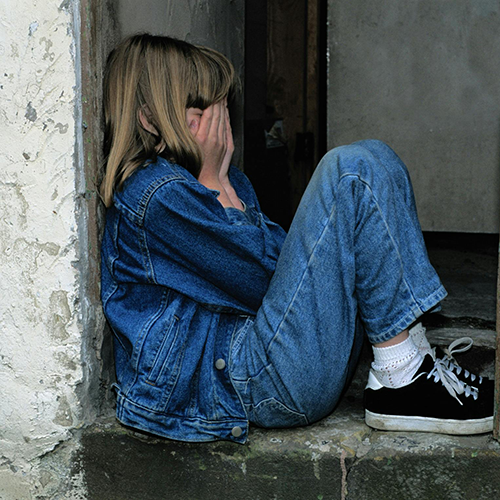 How do psychologists identify, think about, and address challenges children face? What makes a psychological approach to addressing challenges different from other kinds of approaches? How do psychologists evaluate how well their interventions help children? In this FIG seminar, we will consider children in multiple cultures and in diverse domains; for example: helping them learn to read, treating mental illness, reducing feelings of loneliness, promoting positive identity development, and addressing prejudice & discrimination. Our goal will be to understand what psychologists do (and don’t) know about how to solve problems in childhood. The other courses in this FIG will add valuable insights and context to our exploration of these issues. Sociology 170: Population Problems — Social, economic, and political problems affected by birth and death rates, population size and distribution, voluntary and forced migration. World ecology, limits to growth, economic development, international conflict, environmental quality, metropolitan expansion, segregation by age, race, and wealth. Policies affecting reproduction, nuptiality, morbidity, mortality, migration. Gender and Women’s Studies 103: Gender, Women, Bodies, and Health — Examines both physiological and social processes relating to gender and health across the lifespan among cisgender, transgender, and nonbinary individuals. Examples of topics include hormonal processes, reproductive anatomy physiology, sexuality, sexual pleasure, chronic illness, depression, and sexual violence. A primary course objective is for students to connect information about their bodies and personal health to larger social and political contexts. In particular, considers how health and health disparities are shaped by multiple kind of social inequalities, particularly inequalities based on gender. |
| 25fig04 | 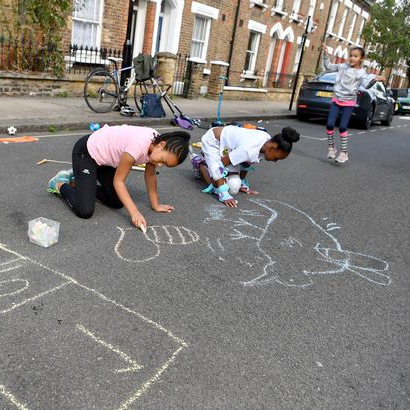 What does it mean to be a kid? What is it like to be a kid? In this FIG, we will see that the answers to these questions depend on children’s social contexts: who they are and where they live their lives. We will examine how the meaning of childhood has varied over time and across cultures, and how children’s experiences vary across different social groups. In doing so, we will recognize that children are shaped by their social contexts, but that they also play an active role in making sense of and responding to their social worlds. Finally, we will explore the challenges and inequalities that children face, and discuss strategies for leveling the playing field in families, schools, and communities. The other classes in the FIG will provide valuable insight, context, and theoretical perspectives that will deepen our analysis of these issues. Communications Arts 250: Survey of Contemporary Media — Key concepts for the critical analysis of television, film, radio, and digital media. Focusing primarily on meanings, aesthetics, technology, media industries, representations, and audiences. Sociology 134: Sociology of Race and Ethnicity in the United States — This course explores the nature of intergroup relations with an emphasis on various forms of racism, discrimination, and white privilege; historical background and characteristics of American Indians, African Americans, Hispanic Americans, Asian Americans and other racial and ethnic minorities; a consideration of economic, housing, political, legal, educational, familial, and health challenges faced by minority groups in U.S. society. |
| 25fig05 |  Children and adolescents spend much of their free time consuming media. This is not surprising given the explosion in digital media platforms, increased access to personal devices, and around-the-clock content streams. In the main seminar in this FIG, Journalism and Mass Communication 176: Children and Media, we will explore how children and adolescents interact with media, considering the potential for both positive and negative impacts on their lives. We will examine a wide range of traditional (e.g., television, movies) and digital media platforms (e.g., social media, cell phones, digital games). We will cover topics such as:
We will take a developmental approach to these topics, exploring the differences in how young children, older children, and adolescents use, interpret, and respond to media. The other courses in the FIG will add to our exploration of these issues. Educational Policy Studies 210: Youth, Education, and Society — Explores the study of youth through theoretical, historical, social, and cultural perspectives with a focus on Minoritized Youth; interrogates the concept of “youth” as a socially constructed category; examines how youth have been positioned within educational, political, economic, and social contexts; analyzes how youth’s racialized experiences intersect with other social identities: social class, gender, and sexuality. Themes explored: conceptions of youth as a social category, education and schooling, race, gender, sexuality, politics and activism, community-based learning, criminal justice, media, and popular culture. Uses historical and contemporary texts and current events to study the lived experiences of young people within diverse racial, cultural, gendered, sexualized and classed contexts. Reflect on own experiences as youth, their relationship to education and other social institutions, and how it informs understanding of society, educational theory and practice. Communication Arts 250: Survey of Contemporary Media— Key concepts for the critical analysis of television, film, radio, and digital media. Focusing primarily on meanings, aesthetics, technology, media industries, representations and audiences. |
| 25fig06 |  The main course of this FIG, Philosophy 104: Children, Marriage, and the Family, is a class in moral philosophy that examines the ethical questions surrounding family life. But it is different from most philosophy classes in two ways. First, we shall be looking at a series of issues concerning a very specific area of morality: the issues concerning children, parents, and family life. What moral norms or values ought to guide both public policy and personal behavior? How should those norms guide us? So, it is very tightly focused on issues that you have probably already thought about. The second way it differs from most philosophy classes is that we will be reading a good deal of nonphilosophical literature. In order to reflect critically on the norms and values relevant to the family, we have to know something about the family: what families have actually been like and what they actually are like, as well as about their effects on the social environment. Here are just three of the topics we’ll discuss:
The class involves reading, a little lecturing, and a lot of discussion. The new ideas you encounter will stretch your imaginations, and will also help you to think better about some of the central decisions in your life, like whether to have children, how to raise them, whether to marry (and if so, who you should choose!). We’ll form a community of learners: you will get to know your classmates. You will discover that, even within a small class, students have had very different experiences of family life, and you will get to understand and reflect on their perspectives. No prior exposure to Philosophy is needed; and most students find, to their surprise, that they want to take at least another course on the same kinds of issues. Sociology 120: Marriage and Family — Learn about how our society structures family life, what the effects are of different forms of family on children, and how families affect other people. Gender and Women’s Studies 103: Gender, Women, Bodies, and Health — Examines both physiological and social processes relating to gender and health across the lifespan among cisgender, transgender, and nonbinary individuals. Examples of topics include hormonal processes, reproductive anatomy physiology, sexuality, sexual pleasure, chronic illness, depression, and sexual violence. A primary course objective is for students to connect information about their bodies and personal health to larger social and political contexts. In particular, considers how health and health disparities are shaped by multiple kind of social inequalities, particularly inequalities based on gender. |
| 25fig07 |  This FIG incorporates different academic disciplines to explore an array of ideas, perspectives, and approaches to the crisis of climate change. Our plan is to work together in ways that reflect the goals that writers, artists, scientists, and activists encourage—by building community, providing language around important issues, and inviting creativity. The core class in this FIG, English 153: Climate Crisis Literature, will do more than focus on the existential dread found in post-apocalyptic fiction but will consider work that embraces the complexity of relationships impacted by the climate crisis: relationships to nature, to each other, and with ourselves. Our syllabus will include poetry, fiction (aka cli-fi!), nonfiction, podcasts, and music, largely from historically marginalized voices and those most impacted by changes in the world’s climate. Assignments will include an Analysis Notebook, presentations, unique writing assignments, and a final creative project of your own design. Attendance will be required in this discussion-based seminar where we also will seek to incorporate insights from the other courses in the FIG. Environmental Studies 112: Environmental Studies: Social Science Perspectives—Explores different social science approaches to interpreting the relationship between environment and society at various scales, from the local to the global. It traces the social origins of environmental concerns, their social impacts, and the different responses they engender. Geography 139: Global Environmental Issues — This course explores the global and local nature of environmental problems, including issues of climate change, food, energy, globalization, deforestation, biodiversity loss, resource access, environmental justice, and population. It considers how we should analyze and act on environmental problems as we confront the apparently daunting scale of such issues. What appear to be single global environmental issues are actually composed of many smaller, context-specific, and place-dependent problems or conflicts. Through an interdisciplinary and geographic perspective, these issues can be understood and addressed at the scale of our lived lives. |
| 25fig08 | 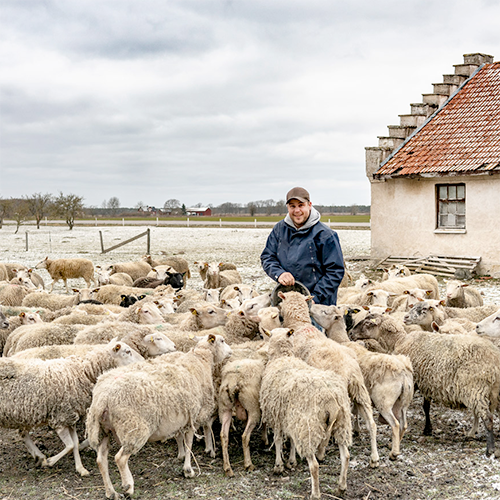 From the Viking Age to the welfare state, sustainability has shaped central, eastern, and northern Europe. This FIG will explore cultural and environmental histories and contemporary issues in those regions. We will explore sustainability through the lens of folklore studies, asking questions about language, culture, and, of course, the environment. In this class, German, Nordic, and Slavic 210: Cultures of Sustainability Across Europe, we will use films and folktales, literature and legends, music and mythologies, and a host of other sources from different cultures to examine what sustainability is, was, and can be. We will be doing a lot of active learning and welcoming visitors to the classroom as we seek to ask more (and better!) questions. In doing so, we will aim to contextualize what sustainability means for individuals, communities, and countries. Along the way, we will learn what role we all play in understanding and engaging with local and global issues of sustainability. Environmental Studies 112: Social Science Perspectives — Explores different social science approaches to interpreting the relationship between environment and society at various scales, from the local to the global. Traces the social origins of environmental concerns, their social impacts, and the different responses they engender. Folklore 100: Introduction to Folklore — This class serves as an introduction to folklore; that is, the arts, beliefs, stories, sayings, customs, and ways of communication we engage with in our everyday lives. We will be examining a variety of folklore genres, while also learning about and employing the methods and practices of folklore scholars. By the end of the term, you will be able to better understand what folklore is, how and why it functions, and the many and often hidden ways that it is a part of our everyday lives. You will learn about ethnographic methods and techniques and how to use interviews, photography, and videography to document various genres of folklore. You will better understand what culture is, how it affects our everyday lives, and how it is transmitted, changed, created and recreated, lost, found, and reclaimed. |
| 25fig09 |  The natural and social sciences tell us something about who and what we are. In the main seminar in this FIG, we will consider how these insights impact our sense of what we should and shouldn’t do with our lives. We will approach this broad question with a focus on two different topics: Death and Sex. We will consider questions like:
The other courses in this FIG will add valuable insights and perspectives as we explore these questions. Anthropology 105: Principles of Biological Anthropology — Genetic basis of morphological, physiological and behavioral variations within and between human populations, and their origins and evolution. Sociology 170: Population Problems — Social, economic, and political problems affected by birth and death rates, population size and distribution, voluntary and forced migration. World ecology, limits to growth, economic development, international conflict, environmental quality, metropolitan expansion, segregation by age, race, and wealth. Policies affecting reproduction, nuptiality, morbidity, mortality, migration. |
| 25fig10 | 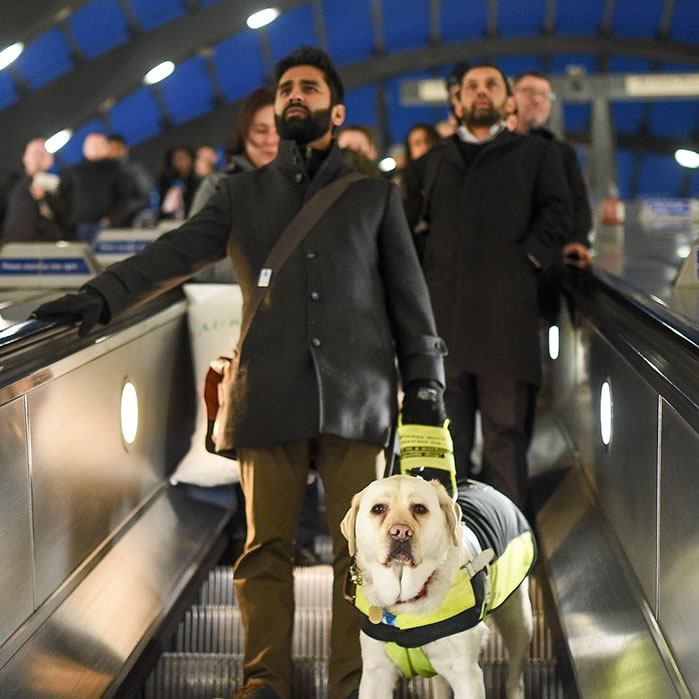 This focus of the main seminar in this FIG, Rehabilitation Psychology and Special Education 210: The Disability Experience, is the modern disability experience, with an emphasis on disability justice and advocacy. In this course, we will analyze the concept of “disability” in multiple ways and in multiple contexts—looking at both medical and social models of disability, with the goal of understanding how these models affect the lives of disabled people. We will examine the foundational implications of the disability rights movement and how it relates to current disability justice and advocacy actions. Throughout, our goal will be to understand how societal attitudes affect the lives of people with disabilities and develop strategies to modify them by considering the role of power and the impact of bias, stigma, stereotypes, and prejudice in the lives of disabled people. We will take an intersectional approach to understanding the experience of disability, including the implications of living with multiple minoritized statuses (BIPOC, LGBTQIA+, etc.). As a result, you will become more confident and effective advocates for the full participation and inclusion of disabled people in everyday society. The other courses in this FIG will add to our understanding of these issues. Rehabilitation Psychology and Special Education 300: Individuals with Disabilities — This class is designed to introduce you to the history, etiology, and characteristics of different types of disability. It incorporates hands-on learning as you participate in a community-based project to learn about services and supports available to adults and youth with disabilities in the local community. Psychology 202: Introduction to Psychology — This course focuses on behavior, including its development, motivation, frustrations, emotion, intelligence, learning, forgetting, personality, language, thinking, and social behavior. |
| 25fig11 | 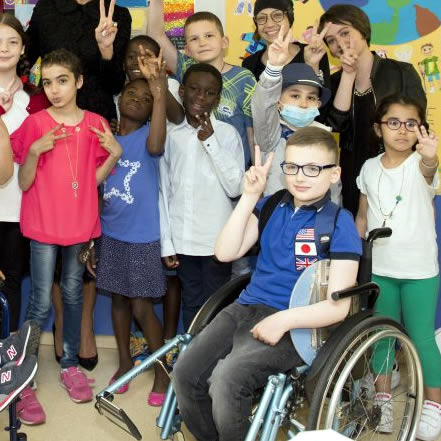 This FIG will provide experiences, knowledge, and skills to be an advocate for educational equity and excellence in the field of special education. This FIG will examine the connections between disability, race/ethnicity, and culture, in education and society in the United States, and supports and services that promote meaningful inclusion in community and educational settings. The main seminar in this FIG, Rehabilitation Psychology and Special Education 200: Issues in Special Education, will examine the educational experiences of students with disabilities through an intersectional lens. We will cover services, models, and outcomes of special education instruction that promote inclusive education. Learning opportunities and activities will include exploration of campus resources and community-based experiences to enhance and expand on the ideas presented in the course. Our discussions and learning experiences in this course will be informed by and complement the content covered in the two linked classes in this FIG. Rehabilitation Psychology and Special Education 300: Individuals with Disabilities — This class is designed to introduce you to the history, etiology, and characteristics of different types of disability. It incorporates hands-on learning as you participate in a community-based project to learn about services and supports available to adults and youth with disabilities in the local community. English 100: Introduction to College Composition — Focuses on development of rhetorical reading, listening, and writing abilities; provides practice in written and spoken communication (emphasis on writing); develops information literacy; provides a foundation for a variety of college course work and post-college careers. |
| 25fig12 |  In this main FIG seminar, Landscape Architecture 106: Indigenous Arts & Sciences, we will explore the intersection of indigenous knowledge and Western science as we experience the culture and ecology of place. We will seek to foster an appreciation for the fundamental importance of diverse cultural perspectives and knowledge systems, as we examine our relationship with the environment. Throughout this experiential course, we will incorporate respect and reciprocity for the land and our community through the process of ecological restoration and stewardship. The other classes in this FIG will deepen our understanding of these issues. Environmental Studies 255: Introduction to Sustainability Science — Explore the foundations of sustainability using the UW-Madison campus as a living laboratory. Ground your feet on the UW–Madison campus and ask questions about the energy we use, the food we eat, the air we breathe, the land we occupy, the goods we purchase, and the waste we create. A blend of environmental sciences and studies. Use principles of chemistry, physics, and biology to understand the dynamics of our human and earth systems, but also explore societal issues like public health and social justice, all through the context of sustainability and the UW-Madison campus community. American Indian Studies 100: Introduction to American Indian Studies — This class focuses on the history, social organization, political experience, and artistic expression of North American Indians, using methods and materials from a number of disciplines as an introduction to the interdisciplinary field. We acknowledge the Ho-Chunk Nation on whose lands the UW campus resides. We deeply respect the knowledge embedded in the Ho-Chunk’s custodianship of Teejop (DeJope) and recognize their continuing connection to land, water, and community here at UW–Madison. |
| 25fig13 | 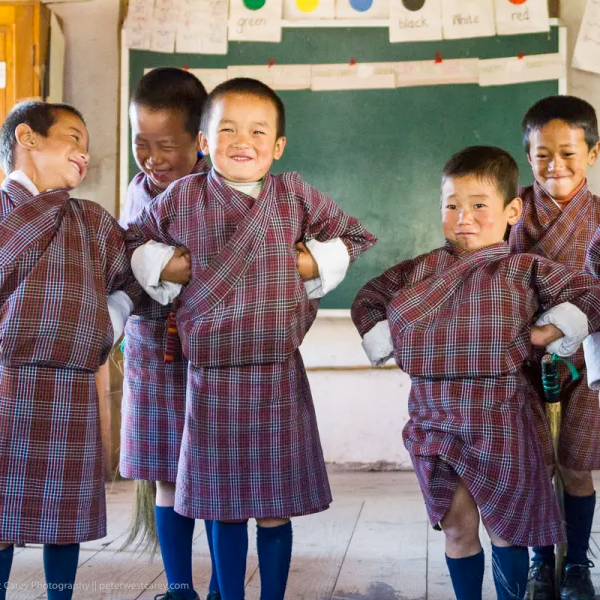 The main seminar in this FIG, Educational Policy Studies 245: Education in East Asia, offers you an opportunity to learn about some of the values, histories, systems, policies, problems, and reforms of education that are taking place in a range of East Asian societies. We will examine “education” broadly as we explore topics like the relationship between education and economic development, social inequality and stratification, gender and family, ethnicity and migration, identity formation, and student movements. Overall, this FIG will provide you with a chance to learn about East Asia and to think about connections between education and broader social issues within a global comparative framework. The other courses in this FIG will add to our exploration of these topics. Educational Policy Studies 240: Comparative Education — Examines the socio-cultural, political and economic forces that shape education around the world, including in the United States. Explores a series of essential questions about the means and ends of education, including: the purposes of schooling in different locations; the role of schooling in producing inequality or supporting social change, particularly in relation to class, race, gender, migration, language, and abilities; global educational reform; global educational assessments; curriculum and pedagogy; and teacher education. Asian Languages and Cultures 255: Introductions to East Asian Civilizations — Multidisciplinary and historical perspectives on the East Asian civilizations of China, Japan, Korea, Tibet and Mongolia from prehistory to the present, including developments in philosophy, economy, governance, social structure, kinship, geography, etc. |
| 25fig14 | 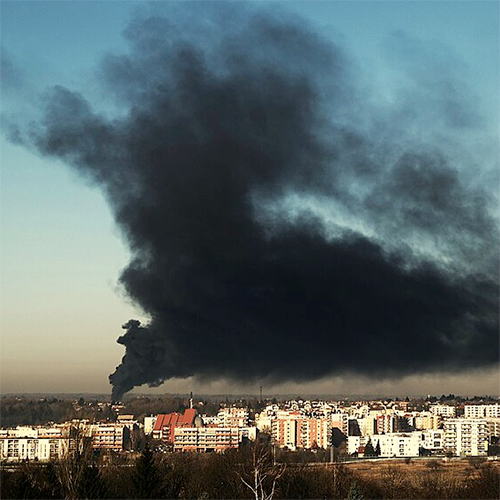 As human populations continue to grow, understanding how we influence the environment is a critical first step to learning how we can protect both natural ecosystems and human health. One of the key ways humans affect the environment is through the creation and spread of pollutants. Pollutants come in many forms and can have effects on levels ranging from the molecular, to the individual, to whole communities, to regional ecosystems, and even to planetary-wide systems. In the main seminar in this FIG, Forest and Wildlife Ecology 375: Ecology, Pollutants, and You, you will:
Overall, our goal will be to learn and to raise awareness about these dynamics, while also developing the skills to communicate effectively about them. The other courses in this FIG will help develop these skills and add to our exploration of these important issues. Geography 139: Global Environmental Issues — Explores the global and local nature of environmental problems, including issues of climate change, food, energy, globalization, deforestation, biodiversity loss, resource access, environmental justice, and population. Considers how we should analyze and act on environmental problems as we confront the apparently daunting scale of such issues. What appear to be single global environmental issues are actually composed of many smaller, context-specific, and place-dependent problems or conflicts. Through an interdisciplinary and geographic perspective, these issues can be understood and addressed at the scale of our lived lives. Life Sciences Communication 100: Science and Storytelling — Fundamentals of effective written and spoken communication. Develops skills in gathering and evaluating information, writing research papers and other documents, and preparing and delivering oral presentations. |
| 25fig15 | 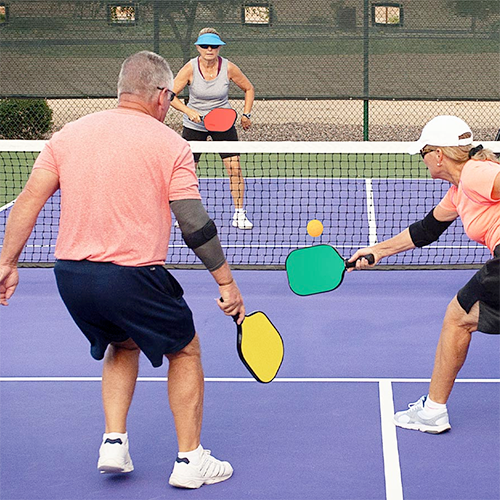 The main seminar in this FIG examines the transformative power of physical activity for health and well-being, posing a critical question: If exercise is medicine, then why is our society experiencing an epidemic of inactivity and its many health-related consequences? Despite compelling evidence of the physical, mental, and emotional advantages of regular movement, sedentary lifestyles and chronic disease rates persist. This class draws on applied exercise physiology, health education, medicine, healthcare economics, and public policy to dissect the complex barriers hindering active living. Together, we will investigate how physical activity prevents chronic disease, improves mental health, optimizes sleep, and enhances cognitive function. Through active participation in a variety of physical activities, you will directly experience these benefits. This FIG is ideal for students passionate about promoting campus health and championing exercise as medicine, particularly those considering careers in health or life sciences. This FIG will empower you to not only understand the science of ‘exercise as medicine’ but also to advocate for its vital role in a healthier future. The other classes in the FIG will add valuable perspectives and insights to our exploration of these important topics. Psychology 120: The Art and Science of Human Flourishing — Explore perspectives related to human flourishing from the sciences and humanities; investigate themes such as transformation, resilience, compassion, diversity, gratitude, community; expand self-awareness, enhanced social connectivity, and ability to change; formulate a sense of what it means to lead a flourishing life that sustains meaningful and fulfilling engagement with studies, relationships, community, and career. Sociology 134: Sociology of Race and Ethnicity in the United States — The nature of intergroup relations; emphasis on various forms of racism, discrimination, and white privilege; historical background and characteristics of American Indians, African Americans, Hispanic Americans, Asian Americans and other racial and ethnic minorities; a consideration of economic, housing, political, legal, educational, familial, and health challenges faced by minority groups in U.S. society. |
| 25fig16 |  Thinking about majoring in a bioscience field? Explore exciting bioscience topics and opportunities at UW–Madison in this FIG. In Integrated Science 100: Exploring Biology you will:
The course is organized around four topics that relate to biology in Wisconsin, with each topic led by a different instructor. We will explore science affecting residents in Wisconsin, look at Wisconsin biological systems as examples of concepts, and learn about how research being done at UW–Madison is contributing to discoveries in biology. Note: “Exploring Biology” is not an introductory biology course. It is a first-year seminar—intended to be taken before the introduction biology series—that helps students to explore a variety of bioscience topics, careers, and campus opportunities. Four Exploring Biology FIGs are brought together into one combined course: you will be grouped with other students in your FIG and work closely with an instructor and peer leader throughout the semester as you engage in interactive and collaborative activities. This class will be taught in a blended format, with students engaging in-person during class and completing activities online. This format will give you the opportunity to form meaningful connections with classmates, to learn at your own pace and time, to engage in a variety of types of activities, and to develop skills to be successful in online and in-person courses. Quotes from past FIG students:
English 100: Introduction to College Composition — Focuses on development of rhetorical reading, listening, and writing abilities; provides practice in written and spoken communication (emphasis on writing); develops information literacy; provides a foundation for a variety of college course work and post-college careers. Mathematics 112: Algebra — Polynomial equations, remainder and factor theorems, functions, graphs of functions, simultaneous linear equations, logarithm and exponential functions, sequences and series, mathematical induction, binomial theorem. |
| 25fig17 | 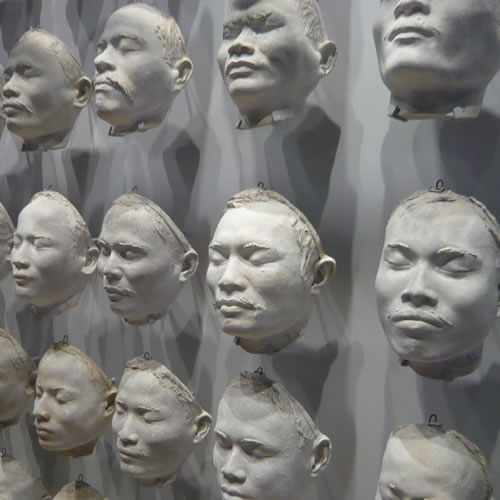 Thinking about majoring in a bioscience field? Explore exciting bioscience topics and opportunities at UW–Madison in this FIG. In Integrated Science 100: Exploring Biology you will:
The course is organized around four topics that relate to biology in Wisconsin, with each topic led by a different instructor. We will explore science affecting residents in Wisconsin, look at Wisconsin biological systems as examples of concepts, and learn about how research being done at UW–Madison is contributing to discoveries in biology. Note: “Exploring Biology” is not an introductory biology course. It is a first-year seminar—intended to be taken before the introductory biology series—that helps students to explore a variety of bioscience topics, careers, and campus opportunities. Four Exploring Biology FIGs are brought together into one combined course: you will be grouped with other students in your FIG and work closely with an instructor and peer leader throughout the semester as you engage in interactive and collaborative activities. This class will be taught in a blended format, with students engaging in-person during class and completing activities online. This format will give you the opportunity to form meaningful connections with classmates, to learn at your own pace and time, to engage in a variety of types of activities, and to develop skills to be successful in online and in-person courses. Quotes from past FIG students:
Anthropology 105: Principles of Biological Anthropology — Genetic basis of morphological, physiological and behavioral variations within and between human populations, and their origins and evolution. Chemistry 103: General Chemistry I — Stoichiometry and the mole concept, the behavior of gases, liquids and solids, thermochemistry, electronic structure of atoms and chemical bonding, descriptive chemistry of selected elements and compounds, intermolecular forces. |
| 25fig18 | 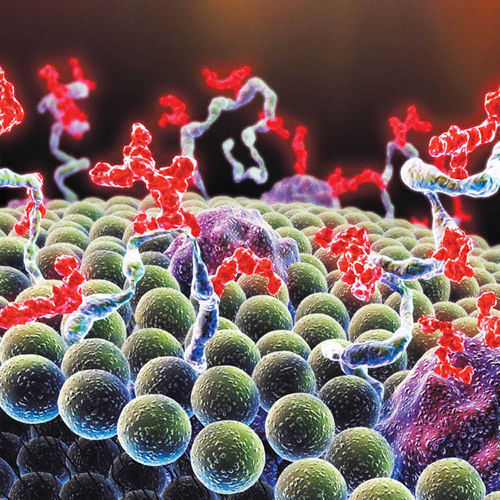 Thinking about majoring in a bioscience field? Explore exciting bioscience topics and opportunities at UW–Madison in this FIG. In Integrated Science 100: Exploring Biology you will:
The course is organized around four topics that relate to biology in Wisconsin, with each topic led by a different instructor. We will explore science affecting residents in Wisconsin, look at Wisconsin biological systems as examples of concepts, and learn about how research being done at UW–Madison is contributing to discoveries in biology. Note: “Exploring Biology” is not an introductory biology course. It is a first-year seminar—intended to be taken before the introductory biology series—that helps students to explore a variety of bioscience topics, careers, and campus opportunities. Four Exploring Biology FIGs are brought together into one combined course: you will be grouped with other students in your FIG and work closely with an instructor and peer leader throughout the semester as you engage in interactive and collaborative activities. This class will be taught in a blended format, with students engaging in-person during class and completing activities online. This format will give you the opportunity to form meaningful connections with classmates, to learn at your own pace and time, to engage in a variety of types of activities, and to develop skills to be successful in online and in-person courses. Quotes from past FIG students:
Interdisciplinary Courses (SoHE) 201: “Belonging, Purpose, and the Ecology of Human Happiness: EcoYou” — This class explores the art and science of purposeful living by integrating academic knowledge with issues real and relevant to students’ lives including: identity and belonging; happiness, purpose and meaning; self-awareness and self-presentation; romantic, peer and family relationships; material culture, consumer behavior and financial well-being; and connections to community, culture, and society. From the microbes that inhabit our guts to political revolutions sparked by a tweet, human lives are embedded in an ecology of complex, interdependent systems. Using the lens of human ecology, you will address “big questions” like: How am I connected to others and to larger systems? What brings happiness and works for the “greater good” in human lives? An overarching goal of the class is to help you understand yourself as embedded in the web of ever-evolving interconnected networks, an “EcoYou.” Human ecology is a systems approach to studying and understanding relationships between humans and their everyday environments; it is a civic and socially conscious orientation that is committed to understanding and improving the quality of human lives. Human ecology is inherently interdisciplinary drawing on research, theories and methods from diverse fields such as sociology, psychology, anthropology, economics, public health, biology, and art and design. English 100: Introduction to College Composition — Focuses on development of rhetorical reading, listening, and writing abilities; provides practice in written and spoken communication (emphasis on writing); develops information literacy; provides a foundation for a variety of college course work and post-college careers. |
| 25fig19 | 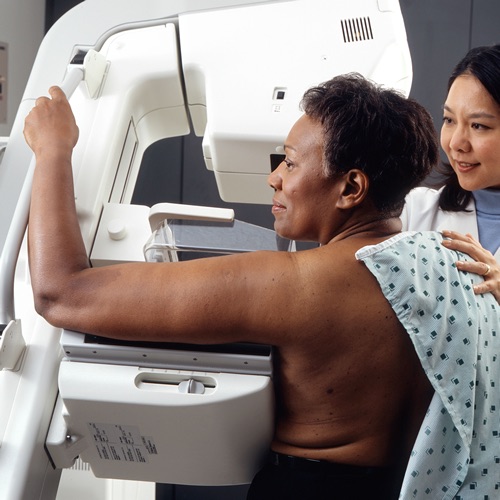 Thinking about majoring in a bioscience field? Explore exciting bioscience topics and opportunities at UW–Madison in this FIG. In Integrated Science 100: Exploring Biology you will:
The course is organized around four topics that relate to biology in Wisconsin, with each topic led by a different instructor. We will explore science affecting residents in Wisconsin, look at Wisconsin biological systems as examples of concepts, and learn about how research being done at UW–Madison is contributing to discoveries in biology. Note: “Exploring Biology” is not an introductory biology course. It is a first-year seminar—intended to be taken before the introductory biology series—that helps students to explore a variety of bioscience topics, careers, and campus opportunities. Four Exploring Biology FIGs are brought together into one combined course: you will be grouped with other students in your FIG and work closely with an instructor and peer leader throughout the semester as you engage in interactive and collaborative activities. This class will be taught in a blended format, with students engaging in-person during class and completing activities online. This format will give you the opportunity to form meaningful connections with classmates, to learn at your own pace and time, to engage in a variety of types of activities, and to develop skills to be successful in online and in-person courses. Quotes from past FIG students:
Gender and Women’s Studies 103: Women and Their Bodies in Health and Disease — Information on physiological processes and phenomena relating to health (for example, menstruation, pregnancy) and ill health (for example, cancer, maternal mortality, depression). Attention to how bodies are located in social contexts that influence health and illness. Explorations of how multiple kinds of social inequalities shape health and health disparities. Information on roles that female-assigned and women-identified people play as health-care consumers, activists, and practitioners. Chemistry 103: General Chemistry I — Stoichiometry and the mole concept, the behavior of gases, liquids and solids, thermochemistry, electronic structure of atoms and chemical bonding, descriptive chemistry of selected elements and compounds, intermolecular forces. |
| 25fig20 |  This FIG is open to any student wishing to be a positive change on issues of global environmental concern. In the main seminar in this FIG, Soil Science 375: Exploring Opportunities in Environmental Sciences, we will explore a range of environmental issues. We will look at ways you can engage with these concerns both through their coursework and outside of the classroom, while simultaneously learning more about yourselves. Throughout the class, we will focus on learning about environmental issues and preparing for possible majors or careers in Environmental Sciences. The other courses in the FIG will add to our exploration of these topics. Soil Science 250: Introduction to Environmental Sciences — Discuss how Planet Earth is an interconnected system dominated by the ever-present exchange of materials and energy that control the fitness and fate of all living organisms. Designed to introduce the interdisciplinary field of Environmental Science by providing a broad overview of the basic concepts used to make sense of the environment. Explore how natural systems work, the services they provide, important environmental challenges facing these systems, and how people are working to address them. Includes professionals in the field as guest speakers to discuss a future in Environmental Sciences. Sociology 170: Population Problems — Social, economic, and political problems affected by birth and death rates, population size and distribution, voluntary and forced migration. World ecology, limits to growth, economic development, international conflict, environmental quality, metropolitan expansion, segregation by age, race, and wealth. Policies affecting reproduction, nuptiality, morbidity, mortality, migration. |
| 25fig21 | 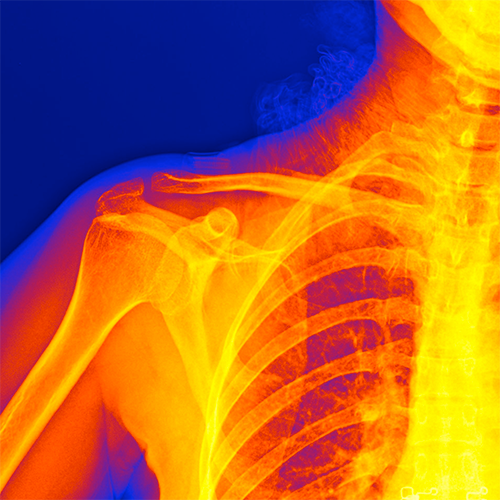 The main seminar in this FIG will focus on the discovery and history of x-rays, the machines that produce x-rays, the different x-ray techniques, and the exciting and creative ways that x-rays can reveal all kinds of insights about the world around us. Since their discovery in 1895, x-rays have fundamentally changed our understanding of many things. While most people are familiar with medical x-rays, the development of powerful x-ray sources including synchrotrons, x-ray free-electron lasers, and most recently, ultrafast tabletop x-ray instruments, has led to an incredible breadth of research. Besides imaging our bones and teeth, x-rays have been used to discover the molecular structure of our DNA, find new advanced materials and drugs, observe photosynthesis in real time, identify geological cores, uncover hidden writings in ancient texts, reveal the chemical ghosts of 100-million-year-old fossils, and show us the 3D inside of an Egyptian mummy. With the emergence of powerful new x-ray sources, many more applications will likely become possible in the future. Our goal in this FIG will be for everyone in the class to get a glimpse of the excitement of seeing the world with different “eyes.” Along the way, they also will gain confidence in their ability to understand important aspects of physics, which are accessible to everyone. The other courses in the FIG will provide helpful perspectives, context, and opportunities to consider new questions that may be explored using these techniques. Integrated Liberal Studies 201: Western Culture: Science, Technology, Philosophy I — Western science and technology in the making. Major developments viewed in philosophical and social context, from antiquity to 17th century. Anthropology 102: Archaeology and the Prehistoric World — Introduction to the ancient world from origins of human culture to the beginnings of written history as revealed by archaeological research at great sites and ruins around the globe. Archaeological analyses of important sites as case studies to illustrate concepts and techniques used by archaeologists in their efforts to understand the diversity of the human past. |
| 25fig22 | 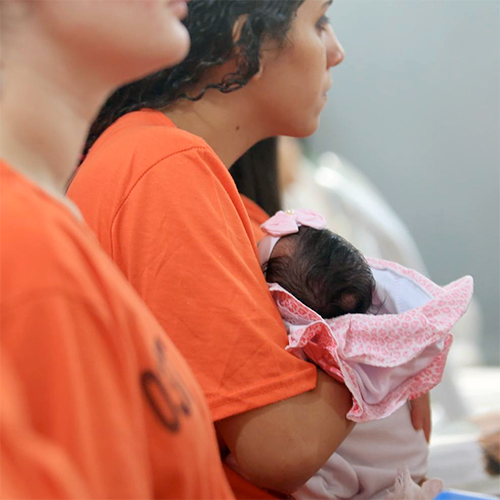 The main seminar in this FIG explores the intersection of families and the criminal legal (or justice) system. We will examine the consequences of incarceration on parents and children, as well as interventions and policies that aim to mitigate the harm caused by justice-system involvement. To improve our understanding of the local justice system context, we will learn about incarceration in Wisconsin and will have an opportunity to visit a prison or jail. We also will consider contemporary reform efforts by looking at a range of perspectives from incremental reforms to abolition, and we will consider the social factors shaping these efforts. Finally, we will explore alternatives to incarceration for parents, an underdeveloped strategy in the United States, but one with promise and important potential in these high-stakes situations. The other courses in the FIG will add valuable insights and perspectives to our exploration of these issues. This FIG might be a good fit for students interested in social justice, legal studies and law, human development and family studies, psychology, public and social policy, as well as those interested more broadly in community-engaged scholarship. Legal Studies 131: Criminal Justice in America — Day-to-day functioning of the elements of the criminal justice system in the United States. Nature of crime in the United States, ideas about causes and solutions. Emphasis on the sociology of the components of criminal justice system—organization and roles of police, lawyers, court, and correctional personnel. History 154: Who is an American? — Organized around the title question: “Who is an American?” Explores how answers to that question have changed over time, focusing on people whose actions and ideas shaped those answers. Rather than an overview of U.S. history, this class focuses on a variety of topics related to our central theme, moving roughly chronologically from the Revolutionary era to the present. Covers the history of racial ideologies and racial inequities, arguments over citizenship and “American” identity, and the ways that various groups have been included or excluded from the nation. |
| 25fig23 |  The main seminar in this FIG asks what food tells us about the creative cultures of Africa and its diaspora. We will map the links between crops, cuisine, and cultural life, by examining a wide array of expressive arts, including novels, films, music, sculpture, and paintings. We study these materials to understand how food production and consumption tie together much of the cultural zone that social historians have famously labeled “the Black Atlantic.” Our goal is to reconsider our relationship with food and to appreciate how human creativity is spurred by agriculture broadly, and even by particular dishes. Along the way, we will learn about the deep inequalities that mark food distribution from and to Africa and the Americas. This FIG will likely appeal to students interested in food, storytelling, literature, the visual arts, Africa, and African peoples around the world, including in the Americas. The central focus on food and food production will necessarily include a range of environmental considerations as well. The other courses in the FIG will add to our exploration of these wide-ranging topics. International Studies 101: Introduction to International Studies — Introduces the field of international studies, and performs an interdisciplinary examination of the cultural, political, economic, and social patterns that have defined the modern world. Nutritional Sciences 132: Nutrition Today — Nutrition and its relationship to humans and their biological, social, and physical environment; current issues and concerns that affect the nutritional status of various population groups. |
| 25fig25 | 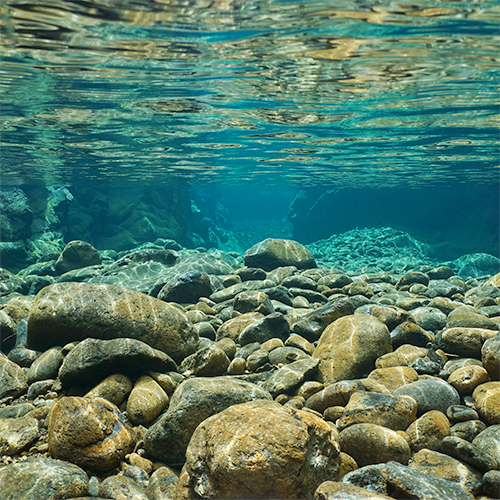 Freshwater is our most precious resource. It is the basis for life itself, and the foundation for human societies. In the main seminar in this FIG, Zoology 115: Freshwater: Past, Present, and Future, we will explore contemporary societal issues relating to water and water resources, ranging from local to global concerns. Many themes of this course are rooted in biology, but we will also integrate insights from a range of other disciplines as we seek to gain a deeper understanding of the role of water in shaping life, landscape, and society. The other classes in the FIG will deepen our understanding of these issues. Geography 120: Introduction to the Earth System — Introduces student to how the Earth system works and what makes Earth livable. Through this course you will gain a deeper appreciation for how the atmosphere, oceans, life, and earth’s surface interact to shape our local, regional and global landscapes. Many students take this course to fulfill their physical science requirement. Others use it as a gateway to majors and careers in Geography, Environmental Studies, and Environmental Science. Zoology 101: Animal Biology — General biological principles. Topics include: evolution, ecology, animal behavior, cell structure and function, genetics and molecular genetics and the physiology of a variety of organ systems emphasizing function in humans. |
| 25fig26 | 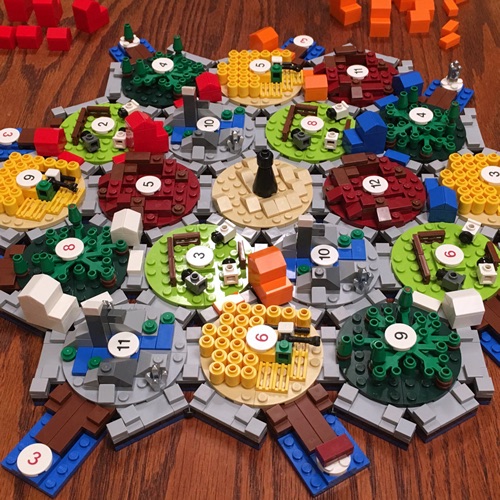 In this main FIG seminar, Curriculum and Instruction 357: Game Design I, you will develop fundamental skills in designing interactive systems through the design, construction, and analysis of playable game prototypes. Collaboratively and individually, you will create a variety of projects including: board games, card games, social and performative games, and interactive fiction/nonfiction. This class is aimed at students who are interested in games as an art form and does not require any prior coding or game design experience. The other classes in this FIG will inform our understanding of design, communication, and representation. Sociology 134: Sociology of Race and Ethnicity in the United States — The nature of intergroup relations; emphasis on various forms of racism, discrimination, and white privilege; historical background and characteristics of American Indians, African Americans, Hispanic Americans, Asian Americans and other racial and ethnic minorities; a consideration of economic, housing, political, legal, educational, familial, and health challenges faced by minority groups in U.S. society. Communication Arts 200: Introduction to Digital Communication — An introduction to digital communication and how it shapes our everyday lives. You will develop digital communication skills, explore digital media tools and trends, and examine expressions of power online. |
| 25fig27 | 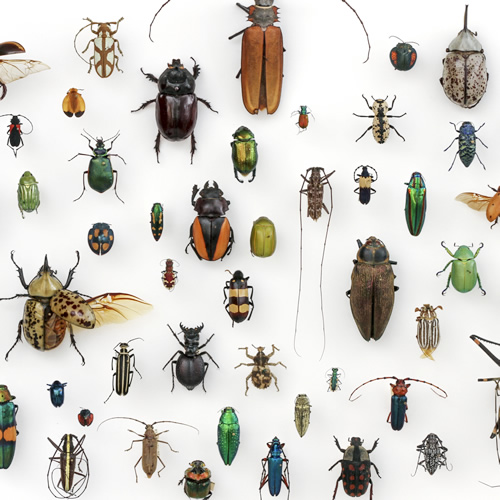 You will first explore global biodiversity: what it is and why it is both important and in peril. We will then focus on the role of taxonomy in biodiversity. Finally, we will turn our attention to insects—by far the most diverse group of multi-cellular organisms on Earth, accounting for more than 58% of all known global biological diversity and some 70% of all animal diversity. Yet most insects go unnoticed by the average human and the few that receive our attention usually do so by negative attributes of their biology or association with us. This is a shame, since many fundamental advances in medical and biological sciences from molecular biology to genetics, from biodiversity to behavior, and from phylogenetic systematics to global climate change have been based on entomological research. Insects are central to agricultural production both as competitors and essential pollinators, and they play a significant role in human health as well as insights into forensic sciences. With background information developed in the linked classes, the main seminar in this FIG, Entomology 375: Biodiversity and the Sixth Mass Extinction, will begin to frame a more realistic picture of insect diversity. You will explore what the immense richness of species means not only to the human species but to the very health of the planet. We plan to offer one weekend field trip to the Kemp Natural Resources Research Station in northern Wisconsin, and one Sunday field trip to the Milwaukee Public Museum, a visit to our UW–Madison Insect Research Collections (WIRC), and other hands-on and experiential learning opportunities to bring the FIG concepts and your class together for an eye-opening journey. Entomology 201: Insects and Human Culture — Importance of insects in the human environment, emphasizing beneficial insects, disease carriers, and agricultural pests that interfere with our food supply. Environmental problems due to insect control agents will also be discussed. Choose one of the following: Chemistry 103: General Chemistry I — Stoichiometry and the mole concept, the behavior of gases, liquids and solids, thermochemistry, electronic structure of atoms and chemical bonding, descriptive chemistry of selected elements and compounds, intermolecular forces, and chemistry laboratory skills. Chemistry 109: Advanced General Chemistry — Accelerated coverage of topics in general chemistry, including introduction to laboratory techniques. Topics include atomic and molecular structure, chemical equilibrium, acid-base chemistry, thermodynamics, kinetics, and electrochemistry. |
| 25fig28 |  The United States spends more on medical care than any other country and yet ranks relatively poorly on many indicators of health. Why are there so many health inequities across different population groups within the United States, such as health inequities by race, class, and gender? How does where you live, work, and play affect your health? How do our social, economic, and political conditions “get under the skin” to affect our health? The main seminar in this FIG, Social Work 275: Contemporary Issues in Social Welfare, integrates knowledge from many disciplines to introduce you to some of the social, economic, and political factors that influence health and create health inequities. We also will explore a range of approaches to address these health inequities, such as through policy change, program development, and community organizing. The other courses in the FIG will add to our exploration of these important issues. Sociology 134: Sociology of Race and Ethnicity in the United States — The nature of intergroup relations; emphasis on various forms of racism, discrimination, and white privilege; historical background and characteristics of American Indians, African Americans, Hispanic Americans, Asian Americans and other racial and ethnic minorities; a consideration of economic, housing, political, legal, educational, familial, and health challenges faced by minority groups in U.S. society. Public Affairs & Public Policy 201: Introduction to Health Policy in the United States — Offers an introduction to health policy in the United States. Examines the ways in which government plays a role in the provision and regulation of health care. Explores key aspects of health policy including the economics of health care (e.g., paying for and access to health care; the health care workforce; the role of markets and consequences of market/government failures, public policy that supports or promotes health; health care outcomes, quality, and disparities; and tools for evaluation) and special topics of interest such as policy addressing risky health behaviors, aging, mental health, and the Affordable Care Act. Think critically about public and private health issues using the policy analysis process, including policy interventions and their justifications, and gain skills in articulating and communicating policy positions. |
| 25fig29 | 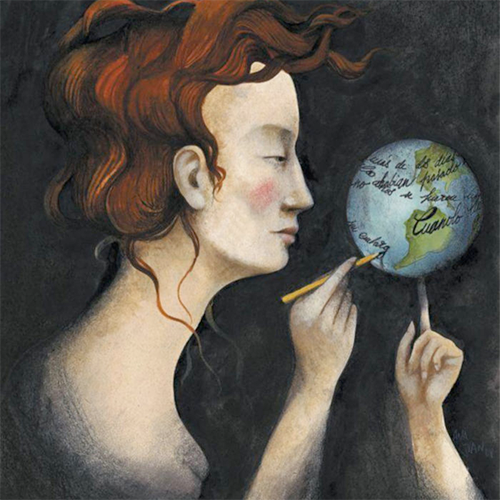 The main class in this FIG, Spanish 224: Introduction to Hispanic Literatures, will focus on a variety of topics related to rich artistic and cultural traditions from diverse regions of the Hispanic world. We will look at borders and identities that connect and separate nations that speak the same language first brought by the Spanish conquistadors in the 15th century. While speaking Spanish and reading short stories, plays and poems, we will examine ideas about cultural and national identity (including stereotypes), cultural values, and diversity. We will explore the stories and dramas of the people whose lives have been determined by borders, migration, geography and history, and we will apply the ideas and themes in this literature to our own lives and our understanding of the world. Learning how to decode rhetoric and style will help us appreciate literature and better understand the cultures that produce it. We will seek to comprehend the dynamics at play in all types of verbal expression, whether a poem, a story, a drama, or a blog post. The other courses in the FIG will add to our exploration of these topics. Anthropology 104: Cultural Anthropology and Human Diversity — Introduction to cultural anthropology. Comparative cross-cultural consideration of social organization, economics, politics, language, religion, ecology, gender, and cultural change. Includes a primary focus on U.S. ethnic and racial minorities. Based on your language placement score, you also will enroll in EITHER Spanish 226 or Spanish 311: Spanish 226: Intermediate Language Practice with Emphasis on Writing and Grammar OR Spanish 311: Advanced Language Practice |
| 25fig30 | 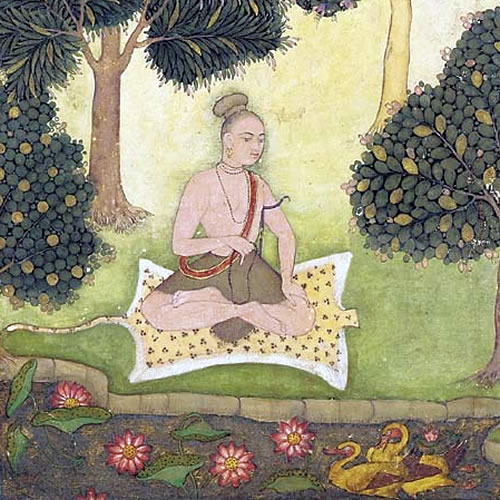 The main course in this FIG, Asian Languages and Cultures: Yoga: Philosophy & Practice, traces the history and development of yoga practices in the Hindu traditions of India and other regions of Asia from early to modern times. We also will examine the adaptation of these practices in modern contexts. By completing Asian 100 through this FIG, you have met a key requirement for the Asian Languages and Cultures major. The other classes in this FIG will add to our understanding of these topics. Anthropology 104: Cultural Anthropology and Human Diversity — A comparative cross-cultural consideration of social organization, economics, politics, language, religion, ecology, gender, and cultural change. Philosophy 101: Introduction to Philosophy — An introduction to some of the major problems and methods of philosophy. We will consider topics from ethics/moral philosophy, political philosophy, metaphysics, epistemology, and the philosophy of religion. Among the questions we will discuss are: What is good and bad? What makes an action right or wrong? What is happiness? Must you be a morally good person in order to be happy? Are we obliged to obey the state and its laws? What is the nature of reality— what kinds of things are really real? What is knowledge and how do we acquire it? Are human beings free? Is the belief in God a matter of knowledge or only a matter of faith? Would immortality be desirable? And, of course, the best question of all: What is the meaning of life? |
| 25fig31 |  How can we use humor and the history of comedy to understand how human societies have changed? In the main seminar in this FIG, we will read comedy and satire from different times and places, and learn to read them as primary documents that tell us about the society, politics, and problems of those places and times. Our readings will be broad and may include: Aristophanes, Jonathan Swift, Robert Darnton’s The Great Cat Massacre, Hammer and Tickle (about humor under Communism), and the Chilean poet Nicanor Parra. We will end with The Onion, founded by former UW-Madison students. The other courses in this FIG will add valuable context and perspectives to our exploration of these topics. Integrated Liberal Studies 203: Western Culture: Literature and the Arts I — The development of literature and the arts in the ancient and medieval world, including Akhenaton’s Egypt, Homer’s Troy, Euripides’ Athens, Virgil’s Rome, and Dante’s Florence. Literature and art in the context of society and ideas. Journalism and Mass Communication 162: Mass Media in Multicultural America — An introduction to the roles and functions of print, film, electronic and digital media in multicultural America. International comparisons highlight differences and commonalities in the social and cultural position of mass media in societies with racially and ethnically diverse populations. |
| 25fig32 | 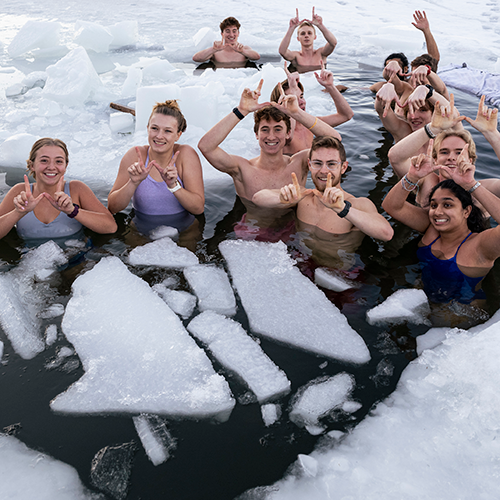 The main seminar in this FIG will explore five dimensions of wellness—physical, emotional, social, intellectual, and occupational—to understand how each contributes to your overall health, wellbeing, and quality of life. We will learn about on-campus resources that support each dimension, and you will discover how to access these resources while you develop and apply practical skills, grounded in theory, to implement meaningful behavior changes and promote wellness across all dimensions. Our goal will be to engage in critical reflection on the challenges and barriers you face in achieving your desired health outcomes and to cultivate strategies to overcome these obstacles to support sustainable wellness practices today and in the future. The other courses in the FIG will add valuable perspectives and opportunities to reflect on these issues. This FIG may be a good fit for people seeking to enhance their personal wellness and for those who want to explore the field of health promotion. Students interested in Health Promotion and Health Equity, Kinesiology, and other pre-health majors may find this FIG to be particularly helpful. Counseling Psychology 237: Mental Health, Self-Awareness, and Social Justice: Working in Diverse Communities — Designed to increase knowledge, awareness, and skills of students interested in working on mental health matters within diverse identity groups and communities. Conceptualize mental health and well-being across communities in terms of (a) intersectional identities (individual and groups), (b) mental health and access and utilization of services, and (c) social determinants of health in different contexts and settings. Engage in reflective exercises to understand how their social identities influence their work in different types of communities. English 100: Introduction to College Composition — Focuses on development of rhetorical reading, listening, and writing abilities; provides practice in written and spoken communication (emphasis on writing); develops information literacy; provides a foundation for a variety of college course work and post-college careers. |
| 25fig33 | 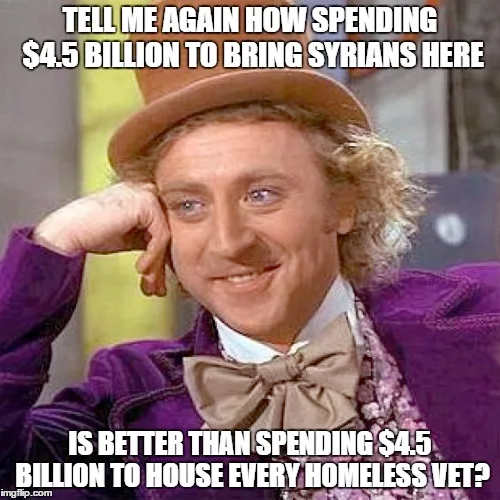 In the main seminar in this FIG, we will explore the wild world-wide-web of “informal vernacular culture” being created, transmitted, and adapted by online communities of twenty-first-century “netizens.” We will think through the powers, potentials, and peculiarities of online culture in relationship to popular culture, political engagement, social change, community-building, and everyday negotiations of individual and group identity in an increasingly polarized world. We will consider the continuities and differences between hypermodern online culture and ancient storytelling traditions and other pre-internet ways of knowing, being, and interacting. We will ponder the new folk groups, storytelling genres, political potentials, and existential dangers that are emerging because of online communication. We will consider whether new forms of belonging, exclusion, connection, and isolation are emerging, and the kinds of connections people are seeking, and the meaning they are making, through memes, TikToks, #challenges, X threads, Twitch streams, Snapchats, >greentexts, fanfics, shitposts, and other forms of digital storytelling. On our journey to the depths and heights of the contemporary online world, students will be invited to research, analyze, and participate in digital storytelling and online culture in an attempt to better understand themselves and this historical moment. Our goal will be to engage with aspects of our everyday digital lives and to turn our online practices into fodder for scholarly investigation, self-reflection, and community engagement. The other courses in the FIG will add valuable perspectives and context as we explore these topics. Library and Information Studies 202: Informational Divides and Differences in a Multicultural Society — Explores the impact of and barriers to access to information on the lives of low-income ethnic/racial minority communities in the United States. Provides an introduction to contemporary information society from a sociological perspective. Computer Sciences 200: Programming I — Learn the process of incrementally developing small (200-500 lines) programs along with the fundamental Computer Science topics. These topics include: problem abstraction and decomposition, the edit-compile-run cycle, using variables of primitive and more complex data types, conditional and loop-based flow control, basic testing and debugging techniques, how to define and call functions (methods), and IO processing techniques. Also teaches and reinforces good programming practices including the use of a consistent style, and meaningful documentation. Intended for students who have no prior programming experience. OR Computer Sciences 300: Programming II — Introduction to Object-Oriented Programming using classes and objects to solve more complex problems. Introduces array-based and linked data structures: including lists, stacks, and queues. Programming assignments require writing and developing multi-class (file) programs using interfaces, generics, and exception handling to solve challenging real world problems. Topics reviewed include reading/writing data and objects from/to files and exception handling, and command line arguments. Topics introduced: object-oriented design; class vs. object; create and define interfaces and iterators; searching and sorting; abstract data types (List, Stack, Queue, PriorityQueue(Heap), Binary Search Tree); generic interfaces (parametric polymorphism); how to design and write test methods and classes; array based vs. linked node implementations; introduction to complexity analysis; recursion. |
| 25fig34 | 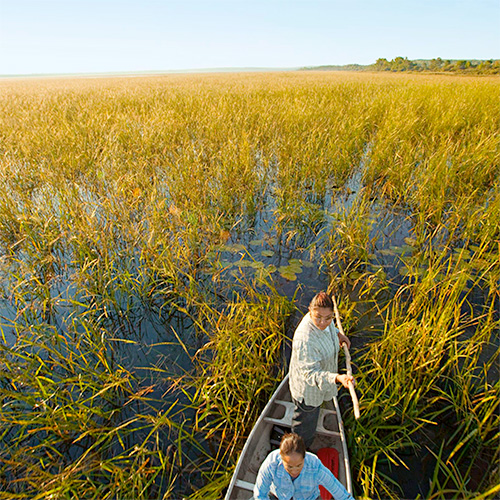 What if our best teacher is all around us, even under our feet? For Indigenous peoples, whose worldviews, languages, and lifeways emerge from, and sustain, reciprocal relations to place, land is always teaching. In the main FIG seminar, Educational Policy Studies 197: Listening to the Land, we will reflect on “land as first teacher” by considering Indigenous approaches to learning, Indigenous languages in relation to land, and the current environmental health of land. We will seek to live the principles of Indigenous learning through Indigenous foodways and experiential, place-based learning activities, including:
Together, as we develop our personal relationship to Teejop (Four Lakes, or the Madison region), we will explore our generational responsibilities to the place we call home. What is land teaching us? And how do we learn to listen? The other courses in the FIG will add to our exploration of these topics. Agroecology 103: An Introduction to the Ecology of Food and Agriculture — Agroecology has blossomed across the world in recent decades as not only a science, but also a practice, and a movement. Employ the multiple disciplines and perspectives that Agroecology affords to analyze our agricultural and food systems within a broader context of dynamic social and ecological relationships. History 190: Introduction to American Indian History — A broad survey of American Indian history which centers Indigenous peoples, communities, and nations in the context of U.S. policy and culture that emphasizes decolonial methods and Native ways of knowing the past. |
| 25fig35 | 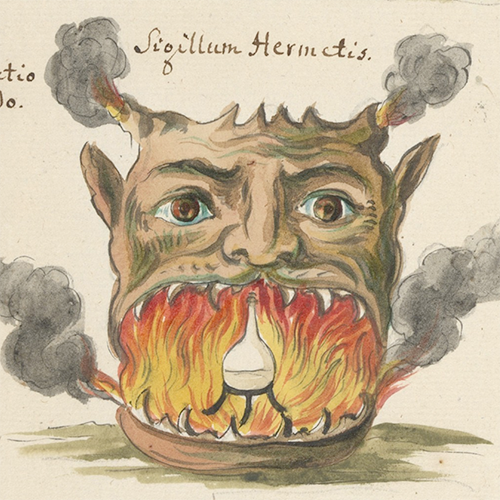 How does magic influence our knowledge and understanding of the natural world? What happens when you hold beliefs that run counter to the authority of prevailing wisdom? Who gets to decide what is possible? In the main seminar in this FIG, English 141: A Discovery of Witches, we will read science fiction along with excerpts from alchemical manuals, pre-modern mathematics and astronomy, and other scientific and magical texts as we examine these and other big questions. Our goal will be to explore the intersections of science, philosophy, magic, and storytelling. The other courses in this FIG will add historical context and helpful disciplinary perspectives to our exploration of magic and adventure in the Age of Science. Integrated Liberal Studies 201: Western Culture: Science, Technology, Philosophy I — What does science have to do with religion? What does it mean to have expertise about the natural world? And what difference do politics and funding sources make to scientific investigation? Learn how to think critically and historically about science in this course by exploring such fundamental questions across two millennia. We begin with Babylonian astrology and ancient Greek mythology and philosophy, then follow the movement of the Greek classical tradition into medieval Islam and Christendom, and finally turn to the 'revolution' in science of the 16th and 17th centuries with Copernicus, Galileo, Descartes, and Newton. These historical investigations provide vital insights into our ideas of the 'natural', scientific observation, and experiment, as well as into our expectations of scientific knowledge and the scientific enterprise. Folklore Program 100: Introduction to Folklore — Surveys folklore in the United States and around the world, with a comparative emphasis on ways in which individuals and groups use beliefs, songs, stories, sayings, dances, festivals, and artifacts to address issues of identity, authenticity, and authority in complex societies. |
| 25fig36 |  Are you interested in kinesiology? The central theme of this FIG is the definition and measurement of physical activity behavior. This is an important issue in the field of kinesiology because of the challenges involved with exercise prescription. Additionally, accurate and consistent measurements of physical activity behavior are needed to examine potential dose-response relationships between physical activity and health outcomes. The main FIG seminar, Kinesiology 112: Make It Count: Measuring Physical Activity Behavior, will provide an opportunity for you to use numbers, equations, and kinesiology-related definitions to address the exercise measurement challenge. Throughout the semester, we will examine the definition of and recommendations for physical activity provided by the American College of Sports Medicine to various populations. As a result of this FIG, you will be able to:
Mathematics 112: Algebra — This class introduces polynomial equations, remainder and factor theorems, functions, graphs of functions, simultaneous linear equations, logarithm and exponential functions, sequences and series, mathematical induction, binomial theorem. English 100: Introduction to College Composition — Focuses on development of rhetorical reading, listening, and writing abilities; provides practice in written and spoken communication (emphasis on writing); develops information literacy; provides a foundation for a variety of college course work and post-college careers. |
| 25fig37 | 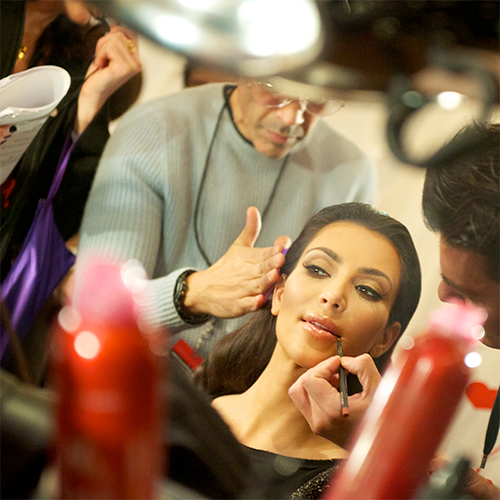 From organ transfer to surrogate motherhood, medical practices have been radically transformed by new medical technologies over the last few decades. Often hailed as “medical miracles,” these technological innovations can change the way we are born, live, and die, radically reshaping our experience with aging and disease. The main seminar in this FIG will explore some of the ethical, social, and cultural questions raised by these medical developments. How much plastic surgery might one undergo in pursuit of the “perfect body”? Is competing with a prosthetic leg cheating? Is it ethical to pay for a kidney or a fertilized egg? Does Ozempic contribute to reinforcing weight stigma? While most medical technologies have originated in the United States and Western Europe, medical innovations are being increasingly globalized, raising important questions at home and abroad about the distribution of risks and benefits, health disparities across and within nations, and social justice concerns more broadly. The other courses in the FIG will provide valuable insights and perspectives that will deepen our engagement with these issues. Given the breadth of topics we will cover, this FIG will likely appeal to students interested in the ethical and sociocultural dimensions of health and health care, along with those interested in aesthetics, art history, anthropology, sociology, gender and women’s studies, health equity, and global health. Gender and Women’s Studies 102: Gender, Women, and Society in Global Perspective — Global, interdisciplinary, social science-oriented analysis of gender, race, class and sexuality in relationship to social institutions and movements for social change. Focus on gender and women in institutions such as education, the economy, the family, law, media, medicine, and politics. Art History 104: The Art of Diversity: Race and Representation in the Art and Visual Culture of the United States — The history of art and visual culture in the United States from the period of colonization until the present from the perspective of how that imagery produced ideas of race and operated to define, exclude, and include various groups over time. Three basic aims:
|
| 25fig39 | 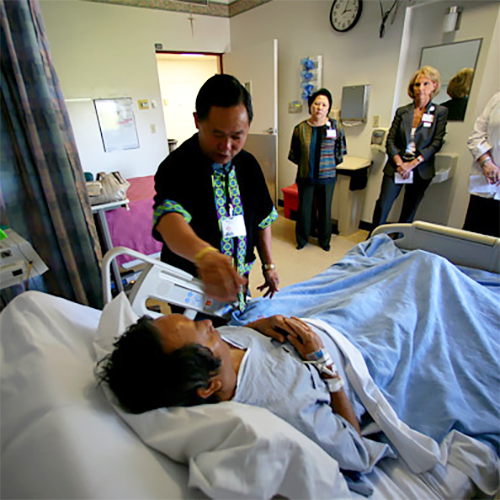 This FIG employs and explores various ways of understanding matter and what matters in sickness and health. Understanding scientific frameworks for chemical and biological processes are of course very important for future healthcare professionals. However, it is also important to understand that for many people and in many cultures, what “matters” about sickness and health extends beyond scientific, medical explanations. Sometimes, it even comes into conflict with them. In the main seminar in this FIG, Religious Studies 102: Religion in Sickness and Health, we will seek to understand the multiple ways that people make sense of, and decisions about, sickness and health. The goal of this FIG is to strengthen the preparation of students interested in healthcare professions by giving them frameworks through which they can build the skills and understandings they will need to be effective professionals in a wide range of healthcare-related fields. A guiding principal of this FIG is that recognizing and understanding how religion or meaning-making functions is a matter of individual and public health. Public Affairs and Public Policy 201: Introduction to Health Policy in the United States — Offers an introduction to health policy in the United States. Examines the ways in which government plays a role in the provision and regulation of health care. Explores key aspects of health policy including the economics of health care (e.g., paying for and access to health care; the health care workforce; the role of markets and consequences of market/government failures, public policy that supports or promotes health; health care outcomes, quality, and disparities; and tools for evaluation) and special topics of interest such as policy addressing risky health behaviors, aging, mental health, and the Affordable Care Act. Think critically about public and private health issues using the policy analysis process, including policy interventions and their justifications, and gain skills in articulating and communicating policy positions. Choose one of the following: Chemistry 103: General Chemistry I — Stoichiometry and the mole concept, the behavior of gases, liquids and solids, thermochemistry, electronic structure of atoms and chemical bonding, descriptive chemistry of selected elements and compounds, intermolecular forces, and chemistry laboratory skills. Chemistry 109: Advanced General Chemistry — Accelerated coverage of topics in general chemistry, including introduction to laboratory techniques. Topics include atomic and molecular structure, chemical equilibrium, acid-base chemistry, thermodynamics, kinetics, and electrochemistry. |
| 25fig40 | 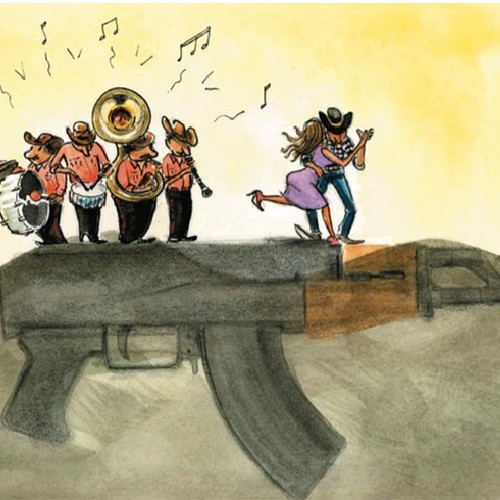 In this main FIG seminar, Integrated Liberal Studies 110: Narco-Culture and Gender in Latin American Literature, we will consider contemporary social problems in Latin America through the perspective of literature and cinema. In the first part of the course, we will explore the problem of gendered violence and human trafficking. In the second, we will study issues related to drug trafficking in Latin America and ponder on the so-called “narco-culture” of this region. Throughout the course, we will see emerging and vibrant cultural movements—some building on ethnic identity—that are reflected in a range of media and featuring new narrators who are providing a sense of hope in the region. The course begins with classic Latin American authors such as Gabriel García Márquez and ends with contemporary women writers. Our overall goal is to gain an appreciation of the cultural context necessary for us to understand a range of important contemporary social issues in the region. Sociology 134: Sociology of Race and Ethnicity in the United States — This course explores the nature of intergroup relations with an emphasis on various forms of racism, discrimination, and white privilege; historical background and characteristics of American Indians, African Americans, Hispanic Americans, Asian Americans and other racial and ethnic minorities; a consideration of economic, housing, political, legal, educational, familial, and health challenges faced by minority groups in U.S. society.
Chicana/o and Latina/o Studies 201: Introduction to Chicana/o and Latina/o Studies — Introduction to the interdisciplinary study of Chicanas/os in the United States. You will become acquainted with recent scholarly literature, paradigms, theories, and debates within Chicana/o studies pertaining to the historical, economic, cultural, and sociopolitical dimensions of the Chicana/o experience in the United States. |
| 25fig41 | 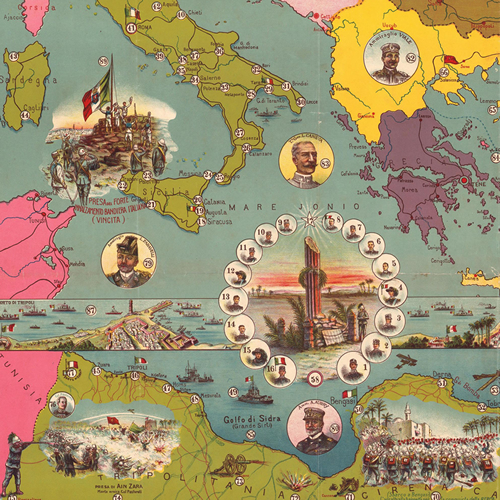 What is a national identity in the context of the fluid globalized world in which we live? How are identities affected by big migratory waves within the same country and, more importantly, from one country or continent to another? The Italian case is one of the many in the so-called Western world that can help us to monitor the possible answers to these questions. Through readings and discussions, we will follow the history of Italy from the Risorgimento (the revolutionary upheaval that led to the unification of the country in 1860) through the two World Wars, and Fascism up to the present time. One of the aims of the main FIG seminar is to analyze the rhetoric used in different periods to understand issues of national identity according to the following historical phases: struggle for the unification of Italy; colonial campaigns; Fascism; and migration from and to Italy in the twentieth and early twenty-first centuries. Through this study of the Italian case, you will become more knowledgeable and aware of the historical development of a European country that was central in the nineteenth century for its struggle to unify, and crucial to the history of the Western countries for the infamous Fascist regime. By studying the Italian case especially through the concerns raised by colonialist politics and migration issues, you will be able to relate not only to what happened and is happening in one major country in Europe, with possible references to the situations in France and Germany, but also to similar issues in the United States (the Italian migration to the United States is a good example). The goal is to help you develop and strengthen their knowledge of a different culture and history as it intersects with your own. History 120: Europe and the Modern World: 1815 to the Present — This survey of modern European history stretches across more than two centuries of political and social transformation, beginning with the aftermaths of the French Revolution and concluding with today's war in Ukraine. Three sets of questions will guide us through this vast topic: Why was Europe's modern history so violent, punctured by war, regime change, and revolution? When did Europeans begin to identify as members of distinct nations, and why did many come to believe that each nation should have its own state? Finally, how were Europeans' ideas about race, nationhood, and modernity shaped by encounters with peoples and cultures beyond Europe? To answer these questions, we will assess an array of primary sources that illuminate how diverse Europeans, both elites and ordinary people, experienced the ruptures of their modern history. Our sources include a novel, a film, political manifestos, memoirs, photographs, and more. We will also examine a number of themes that are critical for understanding the world today, including the growth of capitalism; formation of nation-states; rise of democratic politics; shifts in gender roles; and emergence of ideologies such as liberalism, conservatism, nationalism, socialism, and fascism. Political Science 140: Introduction to International Relations — This class covers the major issues in international relations since the end of World War II including: the causes of war; civil wars and ethnic conflict; economic development; international trade; exchange rates and international monetary relations; international capital flows and financial crises; foreign direct investment; globalization and the environment; international organizations like the United Nations, the International Monetary Fund, the World Bank, and the World Trade Organization; and international law and human rights. The focus is on states’ relations with each other and the factors determining the nature and outcomes of these international interactions. The course seeks to develop analytical tools for thinking about important questions in world politics regardless of the countries or issues involved, to examine international affairs in a systematic way. |
| 25fig42 | 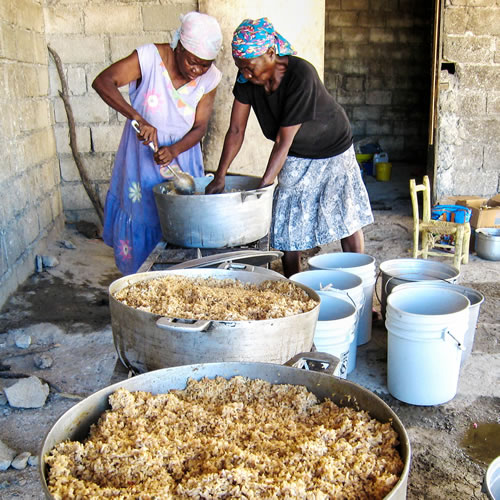 In this biological science FIG, you will explore the intersection of domestic public policy, global public health, socioeconomics, national security, and a sustainable environment. The main course of this FIG, Plant Pathology 375: Food Security Deep Dive, will allow us to gather weekly for a deep dive into issues raised in Plant Pathology 311: Global Food Security. In the two courses, we will utilize problem-based learning to examine the delicate balance that maintains global food security. We will examine the interactions between domestic public policy and global food production. We will discover that food availability depends on sustainable agricultural production with a minimization of losses from disease, contamination, and storage, but also the availability of markets. Thus, the focus of the FIG will be on complicated interactions between seemingly independent issues or concerns. As we explore these issues, you will develop some of the problem-solving and critical thinking skills required for finding answers to biology-related questions:
Instead of a passive lecture course, Global Food Security is taught with integrated alternative approaches, such as situated learning activities, case studies, student-led group discussion and debate, and embedded writing assignments. Food Security Deep Dive is a student-led discussion-based course. Students will have the opportunity to explore in depth issues introduced in Global Food Security and linked courses. Discussions will untangle the relationships of interdependent factors that drive food insecurity. Nutritional Sciences 132: Nutrition Today — Nutrition and its relationship to humans and their biological, social, and physical environment; current issues and concerns that affect the nutritional status of various population groups. Choose one of the following: Chemistry 103: General Chemistry I — Stoichiometry and the mole concept, the behavior of gases, liquids and solids, thermochemistry, electronic structure of atoms and chemical bonding, descriptive chemistry of selected elements and compounds, intermolecular forces, and chemistry laboratory skills. Chemistry 109: Advanced General Chemistry — Accelerated coverage of topics in general chemistry, including introduction to laboratory techniques. Topics include atomic and molecular structure, chemical equilibrium, acid-base chemistry, thermodynamics, kinetics, and electrochemistry. |
| 25fig43 | 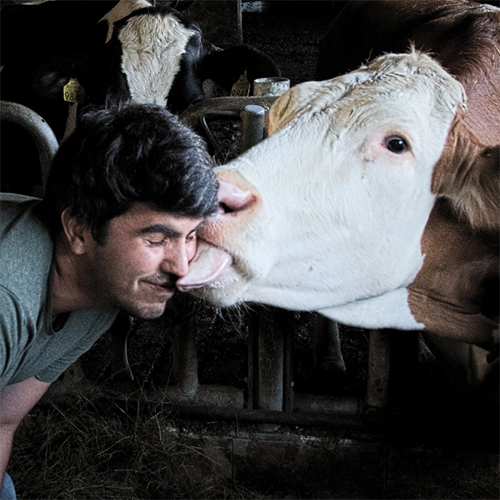 This FIG is designed to bring together students with an interest in veterinary and/or human health and infectious diseases, to explore the central theme of One Health: a concept making the connections between human health and the health of animals and the environment. Topics of interest include:
This FIG will highlight the relationship between human and animal health and the natural world using examples and case studies. We will focus on how animal and ecosystem health are inextricably connected with human health and well-being. This FIG will contribute to intercultural knowledge and competence and to ethical reasoning and actions. The instructors are scientists with expertise in global health, parasitology, and vector biology. Part of the FIG will focus on diseases and environmental risks that have disproportionate impacts on low and middle income countries and will include discussions of the ethical issues associated with addressing some of these problems. Entomology 205: Our Planet, Our Health — An introduction to the multiple determinants of health, global disease burden and disparities, foundational global health principles, and the overlap between ecosystem stability, planetary boundaries, and human health. Explore the core fundamentals of global health scholarship, including but not limited to infectious disease, sanitation, and mental health, and also consider ecological perspectives on these issues through the lens of planetary boundaries. Attention is placed on how human-mediated global change (e.g. climate change, biodiversity loss, land-use patterns, geochemical cycling, agricultural practice) impacts human health and the ecosystem services we depend on. An overview of pertinent issues in sustainability science and planetary health discourse, including the Anthropocene and resilience to understand and critically assess global trends. Choose one of the following: Chemistry 103: General Chemistry I — Introduction to stoichiometry and the mole concept; the behavior of gases, liquids, and solids; thermochemistry; electronic structure of atoms and chemical bonding; descriptive chemistry of selected elements and compounds; and intermolecular forces. Chemistry 109: Advanced General Chemistry — A modern introduction to chemical principles that draws on current research themes. For students with good chemistry and mathematics background preparation who desire a one-semester coverage of general chemistry. Recommended for students intending majors in chemistry or allied fields. |
| 25fig44 | 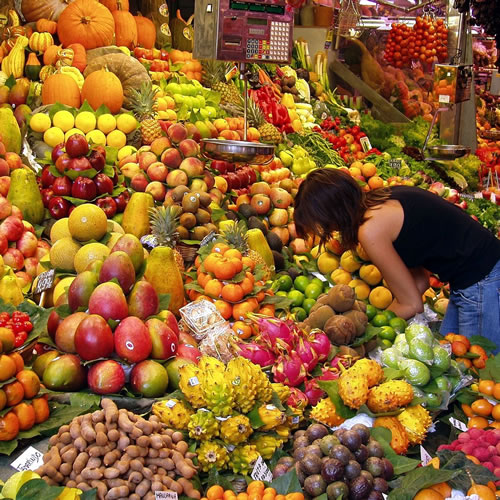 The main seminar in this FIG, Plant Science 350: Plants and Human Well-being (and its discussion section Plant Science 351), focuses on various aspects of well-being associated with plants, plant materials, landscapes, and plant products, including aesthetics, food, medicine, fiber, art, psychoactive substances, and stimulants. This class includes lectures, discussions, hands-on demonstrations, and short field trips and will allow students to build a sense of community while also helping integrate content from the other classes in the FIG. This topic will likely appeal to students interested in horticulture, biology and food systems, medicine and public health, human cultural diversity, and geography. Anthropology 104: Cultural Anthropology and Human Diversity — A comparative cross-cultural consideration of social organization, economics, politics, language, religion, ecology, gender, and cultural change. Choose one of the following: Chemistry 103: General Chemistry I — Stoichiometry and the mole concept, the behavior of gases, liquids and solids, thermochemistry, electronic structure of atoms and chemical bonding, descriptive chemistry of selected elements and compounds, intermolecular forces, and chemistry laboratory skills. Chemistry 109: Advanced General Chemistry — Accelerated coverage of topics in general chemistry, including introduction to laboratory techniques. Topics include atomic and molecular structure, chemical equilibrium, acid-base chemistry, thermodynamics, kinetics, and electrochemistry. |
| 25fig45 | 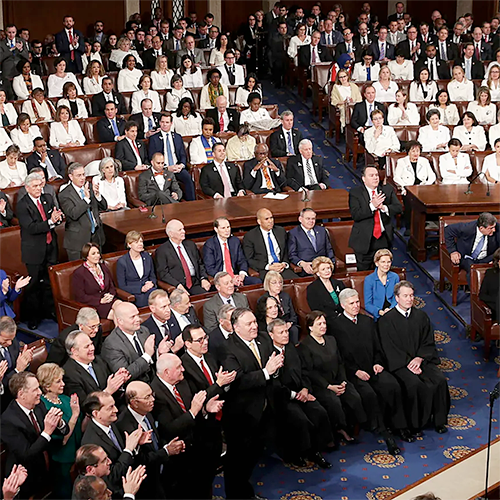 The main seminar in this FIG will take a deep dive into the increasing challenges of political polarization, the rise of populism, and the threats to democracy in the United States and around the world. As political divisions deepen and trust in democratic institutions erodes, we’ll explore big questions: Why are people more polarized than ever? What makes populist leaders so appealing? How do democratic institutions weaken, and what can be done to protect them? The course will tackle key topics like media influence, misinformation, political rhetoric, social identity politics, and the erosion of democratic norms, using real-world case studies to explore how democracies falter—and how they can be rebuilt. Drawing from psychology, political science, and media studies, you will sharpen your ability to think critically about the current political climate. Sociology 134: Sociology of Race and Ethnicity in the United States — This class examines social structures that shape and are shaped by race, ethnicity, racism, and racial/ethnic inequalities. You will learn to understand race and ethnicity as social constructs, and learn how race and ethnicity exist within social structures and institutions. Psychology 120: The Art and Science of Human Flourishing — Explore perspectives related to human flourishing from the sciences and humanities; investigate themes such as transformation, resilience, compassion, diversity, gratitude, community; expand self-awareness, enhanced social connectivity, and ability to change; formulate a sense of what it means to lead a flourishing life that sustains meaningful and fulfilling engagement with studies, relationships, community, and career. |
| 25fig46 | 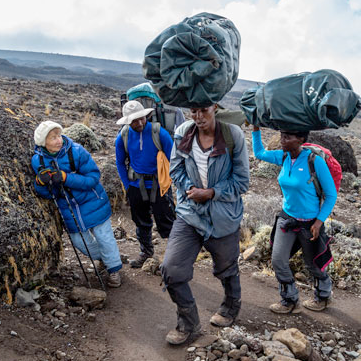 The main seminar in this FIG explores connections between politics and tourism in Africa, past and present. A key question we will consider is how the history of African tourism reflects larger political trajectories and cultural concerns in the continent and beyond. We will examine different kinds of tourism: nature tourism (aka safaris), volunteering tourism, political tourism by world leaders, poverty tourism, small-town tourism development in southern Africa, heritage tourism of diaspora Africans, and contemporary African travel bloggers. You will be encouraged to think critically about individuals on the continent and beyond who have differently imagined lived realities and politicized experiences in Africa through varied forms of tourism. To investigate these issues, we will draw on materials and methods from diverse disciplines and sources, including comic strips, graphic novels, animated cartoons, newspapers, films, podcasts, documentaries, Instagram, street art, and scholarly texts. The other courses in the FIG will add valuable context and perspectives to our exploration of these issues and materials. Political Science 140: Introduction to International Relations — This course covers the major issues in international relations since the end of World War II including: the causes of war; civil wars and ethnic conflict; economic development; international trade; exchange rates and international monetary relations; international capital flows and financial crises; foreign direct investment; globalization and the environment; the United Nations, the International Monetary Fund, World Bank, World Trade Organization, and other international organizations; and international law and human rights. The focus is on states’ relations with each other and the factors determining the nature and outcomes of these international interactions. The course seeks to develop analytical tools for thinking about important questions in world politics regardless of the countries or issues involved, to examine international affairs in a systematic way. History Department 277: Africa: Introductory Survey — This course explores African society and culture, polity and economy with multidisciplinary perspectives from prehistory and ancient kingdoms through the colonial period to contemporary developments, including modern nationalism, economic development and changing social structure. |
| 25fig47 | 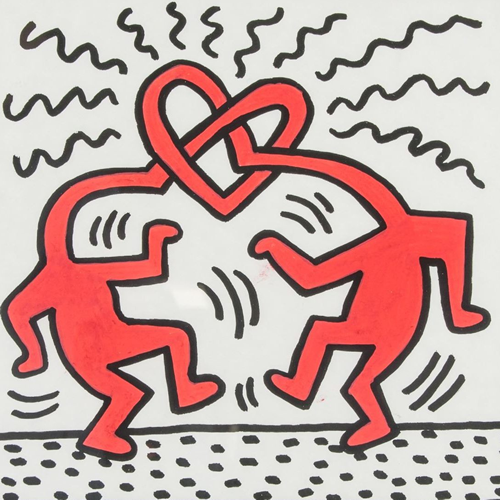 The FIG will focus on the history of LGBTQ+ movement-building in the United States through analysis of queer arts—including visual culture, literature, music, theater—produced by LGBTQ+ people across the twentieth century. As a history course, we will seek to understand the contexts and perspectives of people in the past, paying special attention to how people utilized the arts to build LGBTQ+ community, education and pride across race, class, dis/ability, and variety of identities. Assignments and discussions will help you:
This FIG will appeal to students who are interested in LGBTQ+ history; students interested in issues of representation and self-representation and how that has changed across time; students interested in queer arts and analysis; students seeking an intellectual landing place emphasizing the significance of marginalized identities and communities in the past and present. The other courses in this FIG will provide valuable perspectives and context for understanding these topics. Gender and Women’s Studies 200: Introduction to Lesbian, Gay, Bisexual, Transgender and Queer+ Studies — A multidisciplinary introduction to lesbian, gay, bisexual, transgender, and queer+ (LGBTQ+) studies, including theories of identity formation, different societal interaction with LGBTQ+ communities, LGBTQ+ cultures in history, and contemporary legal and political issues. Course materials explore the intersections between LGBTQ+ identities and other socially marginalized identities, including (but not limited to) those based on race, ethnicity, religion and disability. Communication Arts 250: Survey of Contemporary Media — Key concepts for the critical analysis of television, film, radio, and digital media. Focusing primarily on meanings, aesthetics, technology, media industries, representations, and audiences. |
| 25fig48 | 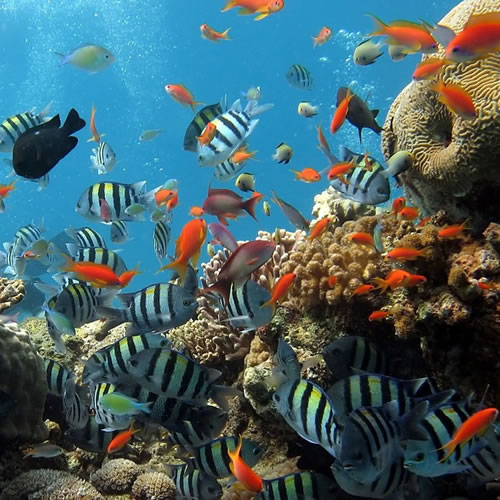 Tropical rainforests and coral reefs inspire awe in all of us, with their serene beauty and astounding biodiversity. They also happen to be two of the most important ecosystems on Earth, housing most of the world’s species and providing valuable ecosystem services for humanity. In Botany 265: Rainforests and Coral Reefs, you’ll explore these incredible natural communities and learn why they are important to human welfare. This course takes a “deep dive” into the foundations of both marine biology and terrestrial ecology and will answer questions like:
One of the most exciting parts of this course is that you will develop your own research project and have a chance to carry it out during an optional summer-break field expedition to Belize in Central America! There, we will hike in lush rainforests and snorkel on the second-largest coral reef in the world, putting to direct use everything you learned during the fall semester. This class is taught in a blended format, and will give you resumé-building experience with instructional technology and multimedia, as well as real scientific research. The linked chemistry class in this FIG will help you understand the physical, chemical, and biological processes that make rainforests and coral reefs function. The environmental studies course will add to our exploration of these topics. Chemistry 103: General Chemistry I — Introduction to stoichiometry and the mole concept; the behavior of gases, liquids, and solids; thermochemistry; electronic structure of atoms and chemical bonding; descriptive chemistry of selected elements and compounds; and intermolecular forces. Environmental Studies 139: Global Environmental Issues — Explores the global and local nature of environmental problems, including issues of climate change, food, energy, globalization, deforestation, biodiversity loss, resource access, environmental justice, and population. Considers how we should analyze and act on environmental problems as we confront the apparently daunting scale of such issues. What appear to be single global environmental issues are actually composed of many smaller, context-specific, and place-dependent problems or conflicts. Through an interdisciplinary and geographic perspective, these issues can be understood and addressed at the scale of our lived lives. |
| 25fig49 |  The nineteenth-century German philosopher Karl Marx is among the most referenced yet least understood thinkers. This FIG introduces you to Marx and his writings by reading selections of his most important works, by situating those works in their historical context, and by tracing the legacy of those works in the revolutions of the twentieth century. The main seminar will be organized around the key ideas Marx developed across his life: alienation, historical materialism, and capitalist reproduction. Throughout, we will pay special attention to how Marx thinks, his method of argumentation and critique, and consider how Marxist theory and analysis offer a unique set of tools for the study of capitalist society, via cultural production, from our contemporary moment back to its origins in sixteenth-century England. History 120: Europe and the Modern World: 1815 to the Present — This survey of modern European history stretches across more than two centuries of political and social transformation, beginning with the aftermaths of the French Revolution and concluding with today's war in Ukraine. Three sets of questions will guide us through this vast topic: Why was Europe's modern history so violent, punctured by war, regime change, and revolution? When did Europeans begin to identify as members of distinct nations, and why did many come to believe that each nation should have its own state? Finally, how were Europeans' ideas about race, nationhood, and modernity shaped by encounters with peoples and cultures beyond Europe? To answer these questions, we will assess an array of primary sources that illuminate how diverse Europeans, both elites and ordinary people, experienced the ruptures of their modern history. Our sources include a novel, a film, political manifestos, memoirs, photographs, and more. We will also examine a number of themes that are critical for understanding the world today, including the growth of capitalism; formation of nation-states; rise of democratic politics; shifts in gender roles; and emergence of ideologies such as liberalism, conservatism, nationalism, socialism, and fascism. Philosophy 101: Introduction to Philosophy — An introduction to some of the major problems and methods of philosophy. We will consider topics from ethics/moral philosophy, political philosophy, metaphysics, epistemology, and the philosophy of religion. Among the questions we will discuss are: What is good and bad? What makes an action right or wrong? What is happiness? Must you be a morally good person in order to be happy? Are we obliged to obey the state and its laws? What is the nature of reality—what kinds of things are really real? What is knowledge and how do we acquire it? Are human beings free? Is the belief in God a matter of knowledge or only a matter of faith? Would immortality be desirable? And, of course, the best question of all: What is the meaning of life? The readings include Plato, Aristotle, Epictetus, Epicurus, Descartes, John Stuart Mill, Immanuel Kant, Jean-Paul Sartre, and a number of contemporary philosophers. |
| 25fig50 | 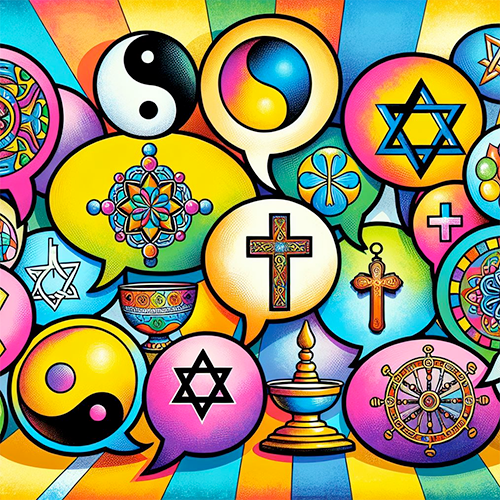 This FIG explores the relationship between religion and everyday language—in other words, language outside of settings we normally think of as “religious.” Using various methods to examine ritual speech and magic, prayer, songs, sermons, conversations, and social media content across several religious traditions, we will learn how religion both infuses and is transformed through these common forms of expression in ordinary life. Along the way, we will discover how language shapes and reflects religious perspectives and beliefs in Wisconsin, the United States, and beyond. The other courses in the FIG will add to our analysis of culture, religion, and language. Linguistics 101: Human Language — Elementary theory and practical work in phonetics, phonology, morphology, and syntax, with attention to formal grammar. Anthropology 104: Cultural Anthropology and Human Diversity — Introduction to cultural anthropology. Comparative cross-cultural consideration of social organization, economics, politics, language, religion, ecology, gender, and cultural change. Includes a primary focus on U.S. ethnic and racial minorities. |
| 25fig51 |  Through astronomy, the oldest science, this FIG connects the history of scientific thought with modern science. From the first humans watching the stars move to modern redshift surveys of galaxies, motions in the skies have been fundamental to our thinking about our place in the universe. We will use real and virtual astronomical experiences to explore how our understanding of planetary systems came to its modern form, from Aristotle to the discovery of exoplanets around other stars. You will emerge with an enhanced awareness of how our environment extends to the boundaries of the Solar System and your place within it. Along the way, you will achieve a deeper understanding and appreciation of the scientific way of knowing that plays such an important role in shaping our world today. This journey will be stimulated in part by the landmark philosophical work The Structure of Scientific Revolutions by Thomas Kuhn. In the FIG seminar, Interdisciplinary Courses (L&S) 107: Observation and Discovery in Astronomy, we will use hands-on, interactive astronomical observations, laboratory demonstrations, and inquiry activities to complement and contextualize your learning in the two linked classes. How do telescopes work? What does a stellar spectrum look like? What are planets made of? How do missions navigate through the Solar System? Observations of the sky will be an important part of your learning. Where will you find the moon tomorrow night? How do planets move during the semester? What is space weather? Our classroom will include the libraries, planetarium, and observatories on campus. In addition to the regular class time, you will participate in some out-of-class activities, both day and night, scheduled as weather permits. Astronomy 104: Our Exploration of the Solar System — Humanity is linked to the solar system in countless ways. Our view of the solar system, how planets form, and how planetary systems evolve has fundamentally changed with the discovery of countless exoplanets around other stars. Join us in exploring the modern view of the solar system and its relation to other planetary worlds. Includes the sky and celestial motions; ancient astronomy; the Copernican revolution; gravity, orbits, and interplanetary travel; formation of solar system; survey of sun, planets and moons; asteroids, meteors and comets; discovery of exoplanets, and the origin of life. History of Science 201: The Origins of Scientific Thought — What does science have to do with religion? What does it mean to have expertise about the natural world? And what difference do politics and funding sources make to scientific investigation? Learn how to think critically and historically about science in this course by exploring such fundamental questions across two millennia. We begin with Babylonian astrology and ancient Greek mythology and philosophy, then follow the movement of the Greek classical tradition into medieval Islam and Christendom, and finally turn to the ‘revolution’ in science of the sixteenth and seventeenth centuries with Copernicus, Galileo, Descartes, and Newton. These historical investigations provide vital insights into our ideas of the ‘natural,’ scientific observation, and experiment, as well as into our expectations of scientific knowledge, the scientific way of knowing, and the scientific enterprise. |
| 25fig52 |  In the wake of the global pandemic, the question of how people share space together has become newly relevant for artists, activists, and thinkers across a variety of disciplines. The main seminar in this FIG, English 175: Poetics of Collective Space, brings together literary, cinematic, and photographic works with reflections by scholars and philosophers to analyze the problem of collective space. How do people inhabit space as a group? What kinds of emotions, practices, and politics come into play when collective space—including virtual space—emerges? This FIG explores practices of space through reading and viewing assignments, group work and collaborative presentations, as well as site-specific trips to spaces in and around the UW campus (the hill or square, the street, the museum, the library) to reflect on space in a hands-on way. The other courses in the FIG will add to our exploration of these issues. Art History 104: The Art of Diversity: Race and Representation in the Art and Visual Culture of the United States — The history of art and visual culture in the United States from the period of colonization until the present from the perspective of how that imagery produced ideas of race and operated to define, exclude, and include various groups over time. Three basic aims:
Geography 101: Introduction to Human Geography — Human geographers explore socio-spacial relations, processes and representations of the world in which we live. Engages economic, political, urban, socio-cultural and environmental geographic perspectives to investigate patterns and processes that have come to be associated with globalization. |
| 25fig53 | 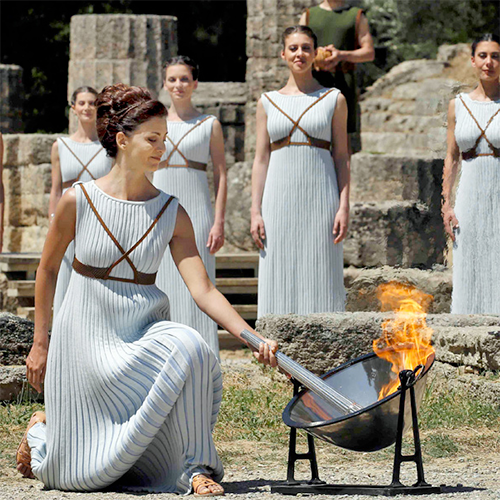 The main seminar in this FIG, Classics 101: Greek and Roman Sports, explores ancient sports and spectacles in their mythic and historical contexts with the goal of helping us understand more broadly the values and structures that underlie athletic competition within a society. We will examine a wide variety of ancient materials and reflect on sports and games in myth and religion. We will learn about the history of the Olympics and other Panhellenic/international competitions and we will explore ideas about the “athletic body,” including considerations of health and exercise, medicine, and age and gender in sports. Throughout, we will develop conceptual frameworks for connecting ancient sports to current deliberations on topics like masculinity, entertainment, violence, and identity. The other courses in this FIG will add to our exploration of these topics. Anthropology 105: Principles of Biological Anthropology — Genetic basis of morphological, physiological and behavioral variations within and between human populations, and their origins and evolution. Folklore 100: Introduction to Folklore — This class serves as an introduction to folklore: the arts, beliefs, stories, sayings, customs, and ways of communication we engage with in our everyday lives. We will be examining a variety of folklore genres, while also learning about and employing the methods and practices of folklore scholars. By the end of the term, you will be able to better understand what folklore is, how and why it functions, and the many and often hidden ways that it is a part of our everyday lives. You will learn about ethnographic methods and techniques and how to use interviews, photography, and videography to document various genres of folklore. You will better understand what culture is, how it affects our everyday lives, and how it is transmitted, changed, created and recreated, lost, found, and reclaimed. |
| 25fig54 | 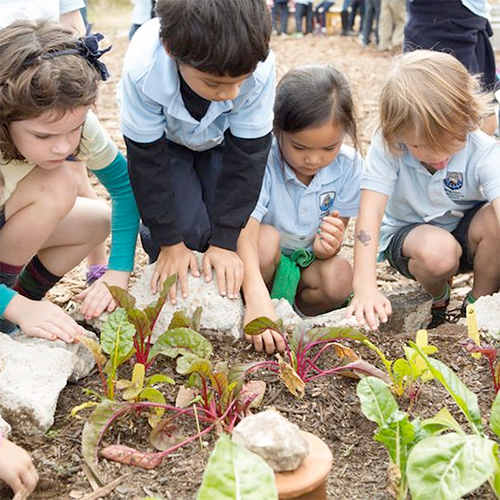 In the main seminar in this FIG, Curriculum and Instruction 331: Taking Education Outside of School, we will explore educational experiences that exist outside of school—like in museums, libraries, clubs, sports, and parks. We will study the characteristics of these experiences, the goals and outcomes often associated with these learning environments, and consider how these experiences both reflect and advance broader changes within our education system and within our communities today. The goal is to broaden and deepen our understanding of what “education” looks like, and the other courses in the FIG will add to our exploration of this topic. Educational Policy Studies 200: Race, Ethnicity, and Inequality in American Education — Explores the complex relationships among race, ethnicity, and inequality in U.S. public education through theoretical, historical, social, and cultural frameworks and perspectives. Specifically, examine how schools serve are sites where racial/ethnic inequality is produced, reproduced, and resisted through institutional structures and the “everyday” practices of teachers, students, parents, and community members. Examine how race and ethnicity intersect with other identities (e.g. gender, social class, sexual orientation, etc.). It is centrally focused on K–12 education and working in multicultural contexts. Psychology 120: The Art and Science of Human Flourishing — Explore perspectives related to human flourishing from the sciences and humanities; investigate themes such as transformation, resilience, compassion, diversity, gratitude, community; expand self-awareness, enhanced social connectivity, and ability to change; formulate a sense of what it means to lead a flourishing life that sustains meaningful and fulfilling engagement with studies, relationships, community, and career. |
| 25fig55 |  In the main seminar in this FIG, Scandinavian Studies 235: The World of Sagas, we will learn about the Norse people as they expanded through Europe and beyond. We will study their science and technology, environment, mythology, gender, economics, politics, and more. This class approaches the Vikings along historical lines and uses both texts from medieval sources and archeological materials. We will explore:
The starting point for this course is the images we already know of the Vikings, as seen in games like Assassins Creed: Valhalla, TV shows like The Vikings, or even movies like Marvel’s Thor. Where do these images come from and how are they formed in modern consciousness? Then we will look at the medieval Scandinavians themselves to learn what is known and what is not known about these people and their age. This FIG will appeal to students who are interested in learning about the present through the past and those with a specific interest in the Nordic countries. The other classes in this FIG will enhance our examination of these topics. Enrollment in an optional first-semester Swedish, Norwegian, or Danish class will enhance your understanding of the cultures of the region and is highly recommended. Folklore Program 100: Introduction to Folklore — Surveys folklore in the United States and around the world, with a comparative emphasis on ways in which individuals and groups use beliefs, songs, stories, sayings, dances, festivals, and artifacts to address issues of identity, authenticity, and authority, in complex societies. Optional language class: Scandinavian Studies 101: First Semester Norwegian (36991) Scandinavian Studies 111: First Semester Swedish (37339) Scandinavian Studies 121: First Semester Danish (23619) |
| 25fig56 |  This FIG explores the concept of “youth” as a socially constructed and political category. Centered on scholarly literature and current events, this FIG will provide a forum for students to discuss issues, ideas, and concepts central to understanding the social and political factors that shape the experiences and educational outcomes of youth in the United States — and how these experiences vary across race, ethnicity, class, ability, gender, sexuality and context. The main seminar in this FIG, Educational Policy Studies 210: Youth, Education, and Society, explores how institutions like the family, the criminal justice system, the health care system, and community-based programs shape youth, and explores how these influence their educational and social trajectories. Throughout this course, you will be challenged to reflect on your own position in society and your own educational experiences, and to learn about and from the experiences of others. In this class, you will:
The other courses in the FIG will provide skills and insights that will deepen our exploration of these issues. African American Studies 154: Hip-Hop and Contemporary American Society — The aesthetic and political evolution of hip-hop culture and its relationship to contemporary social issues. English 100: Introduction to College Composition — Focuses on development of rhetorical reading, listening, and writing abilities; provides practice in written and spoken communication (emphasis on writing); develops information literacy; provides a foundation for a variety of college course work and post-college careers. |
| 25fig57 |  This FIG offers the beginning art student three of the six foundation classes which are required for the Bachelor of Science in Art, Bachelor of Fine Arts, and Bachelor of Science in Art Education degree programs. (Note: The other three classes will be offered as SPRIGs in the spring.) The Art Department has been offering this FIG for many years. Art majors are very enthusiastic about this program. They enjoy the sense of community and have reaped the benefits of beginning their undergraduate careers as a team, helping each other develop their technical drawing and design skills, while simultaneously being introduced to contemporary and historical practices in art. Art 108: Foundations of Contemporary Art provides the historical context for the richly diverse state of contemporary art practice, and is the springboard for new art students to launch their own unique, artistic visions. In Art 102: Two-Dimensional Design and Art 212: Drawing Methods and Concepts, you will be led through a series of projects that develop and hone their visual vocabulary through exercises in composition, line, value, texture, and color manipulations. They will be asked to challenge themselves to consistently build upon existing skills and ideas, and to strive for excellence in the successful combination of idea and form in all their work. Two other versions of this FIG, Option 2 and Option 3, include the same classes on different days and times. You are strongly encouraged to sign up for Art 508: Colloquium in Art. This one-credit class will introduce you to nationally and internationally recognized art professionals (art.wisc.edu/public-programs) Students enrolling in an Art FIG will be asked to provide their own laptops outfitted with Adobe Creative Cloud. Recommended systems are:
or
Memory upgrades and a three-year Apple Computer warranty strongly suggested. |
| 25fig58 |  This FIG offers the beginning art student three of the six foundation classes which are required for the Bachelor of Science in Art, Bachelor of Fine Arts, and Bachelor of Science in Art Education degree programs. (Note: The other three classes will be offered as SPRIGs in the spring.) The Art Department has been offering this FIG for many years. Art majors are very enthusiastic about this program. They enjoy the sense of community and have reaped the benefits of beginning their undergraduate careers as a team, helping each other develop their technical drawing and design skills, while simultaneously being introduced to contemporary and historical practices in art. Art 108: Foundations of Contemporary Art provides the historical context for the richly diverse state of contemporary art practice, and is the springboard for new art students to launch their own unique, artistic visions. In Art 102: Two-Dimensional Design and Art 212: Drawing Methods and Concepts, you will be led through a series of projects that develop and hone their visual vocabulary through exercises in composition, line, value, texture, and color manipulations. They will be asked to challenge themselves to consistently build upon existing skills and ideas, and to strive for excellence in the successful combination of idea and form in all their work. Two other versions of this FIG, Option 1 and Option 3, include the same classes on different days and times. You are strongly encouraged to sign up for Art 508: Colloquium in Art. This one-credit class will introduce you to nationally and internationally recognized art professionals (art.wisc.edu/public-programs) Students enrolling in an Art FIG will be asked to provide their own laptops outfitted with Adobe Creative Cloud. Recommended systems are:
or
Memory upgrades and a three-year Apple Computer warranty strongly suggested. |
| 25fig59 |  This FIG offers the beginning art student three of the six foundation classes which are required for the Bachelor of Science in Art, Bachelor of Fine Arts, and Bachelor of Science in Art Education degree programs. (Note: The other three classes will be offered as SPRIGs in the spring.) The Art Department has been offering this FIG for many years. Art majors are very enthusiastic about this program. They enjoy the sense of community and have reaped the benefits of beginning their undergraduate careers as a team, helping each other develop their technical drawing and design skills, while simultaneously being introduced to contemporary and historical practices in art. Art 108: Foundations of Contemporary Art provides the historical context for the richly diverse state of contemporary art practice, and is the springboard for new art students to launch their own unique, artistic visions. In Art 102: Two-Dimensional Design and Art 212: Drawing Methods and Concepts, you will be led through a series of projects that develop and hone their visual vocabulary through exercises in composition, line, value, texture, and color manipulations. They will be asked to challenge themselves to consistently build upon existing skills and ideas, and to strive for excellence in the successful combination of idea and form in all their work. Two other versions of this FIG, Option 1 and Option 2, include the same classes on different days and times. You are strongly encouraged to sign up for Art 508: Colloquium in Art. This one-credit class will introduce you to nationally and internationally recognized art professionals (art.wisc.edu/public-programs) Students enrolling in an Art FIG will be asked to provide their own laptops outfitted with Adobe Creative Cloud. Recommended systems are:
or
Memory upgrades and a three-year Apple Computer warranty strongly suggested. |
| 25fig60 | 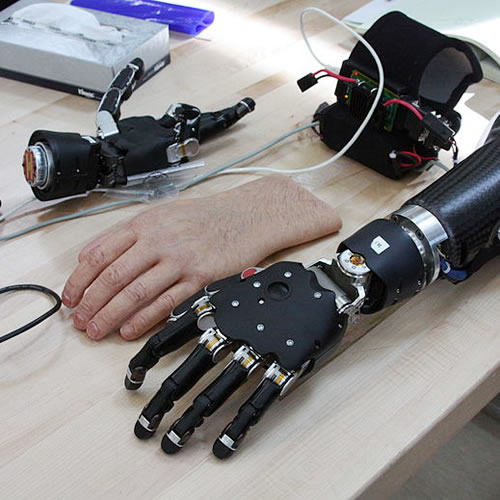 This FIG is for first-year students in the College of Engineering. The main class in the FIG, Interdisciplinary Courses (Engineering) 170: Design Practicum, will introduce you to design via the invention, fabrication and testing of a device that solves a problem proposed by a real-world client. Lectures will address information retrieval techniques, specification writing, methods for enhancing creativity, analysis techniques, scheduling, selection methodologies, cost estimating, sustainability in design, shop safety, engineering ethics, opportunities for engineering students (i.e., study abroad, internships, co-ops), major exploration, fabrication equipment and techniques, and oral and written communication. In this FIG section, we will apply engineering and design toward solving healthcare-related problems while also incorporating insights from the linked Nutritional Sciences class. Nutritional Sciences 203: Introduction to Global Health — This class is a broad survey of contemporary issues and controversies in global health. It examines both the factors responsible for causing global health problems and the steps needed to move toward possible solutions. The class also includes presentations by a series of speakers from highly varied professions, each of whom discusses how their work contributes to reducing the global burden of disease. A substantial portion of the class focuses on agriculture and nutrition, two disciplines with critical roles in global health that are often omitted from more traditional public and global health courses. Choose one of the following: Chemistry 103: General Chemistry I — Stoichiometry and the mole concept, the behavior of gases, liquids and solids, thermochemistry, electronic structure of atoms and chemical bonding, descriptive chemistry of selected elements and compounds, intermolecular forces, and chemistry laboratory skills. Chemistry 109: Advanced General Chemistry — Accelerated coverage of topics in general chemistry, including introduction to laboratory techniques. Topics include atomic and molecular structure, chemical equilibrium, acid-base chemistry, thermodynamics, kinetics, and electrochemistry. |
| 25fig61 |  Engineers are in a unique position to make a difference in combating some of the world’s most pressing environmental issues. You will delve into the opportunities and complexities in sustainability and engineering through the design of a team product. The main seminar in this FIG, Interdisciplinary Courses (Engineering) 170: Design Practicum, will provide an introduction to design via the invention, fabrication, and testing of a device that solves a problem proposed by a real-world client. Lectures address information retrieval techniques, specification writing, methods for enhancing creativity, analysis techniques, scheduling, selection methodologies, cost estimating, sustainability in design, shop safety, fabrication equipment and techniques, and oral and written communication. Environmental Studies 112: Social Science Perspectives — Emphasizes the importance of social factors in the generation and resolution of complex environmental problems with an interdisciplinary perspective. It includes a comparison of specific communities in the more and less developed areas of the world. |
| 25fig62 | 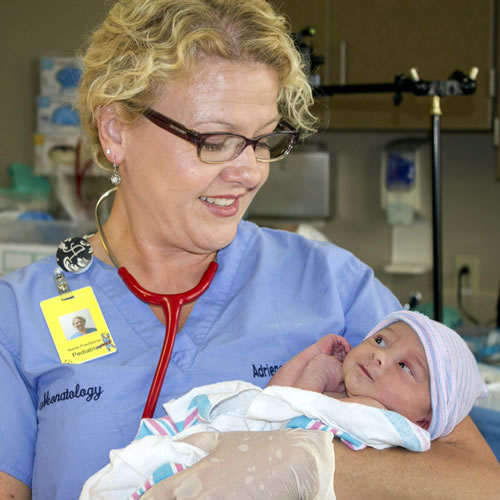 Nursing 125: Introduction to Nursing is the main course in this FIG. It aims to develop academic and interpersonal skills that will be beneficial for success at UW-Madison and in future courses. Additionally, it provides an overview of various careers and educational pathways in the field of nursing. Rehabilitation Psychology & Special Education 300: Individuals with Disabilities — This class is designed to introduce you to the history, etiology, and characteristics of specific categories of disability. It incorporates hands-on learning as you develop your own service-learning projects directly related to working with persons with disabilities. English 100: Introduction to College Composition — Focuses on development of rhetorical reading, listening, and writing abilities; provides practice in written and spoken communication (emphasis on writing); develops information literacy; provides a foundation for a variety of college course work and post-college careers. This FIG is designed for students considering an application to the Nursing Program in the School of Nursing; courses in this FIG have been carefully selected to fulfill requirements for the Nursing Program. Acceptance into the School of Nursing is dependent on a number of factors including completion of specific courses and meeting minimum grade-point average requirements. If you are interested in this academic path, please meet with an advisor from the School of Nursing to get full information. |
| 25fig64 | 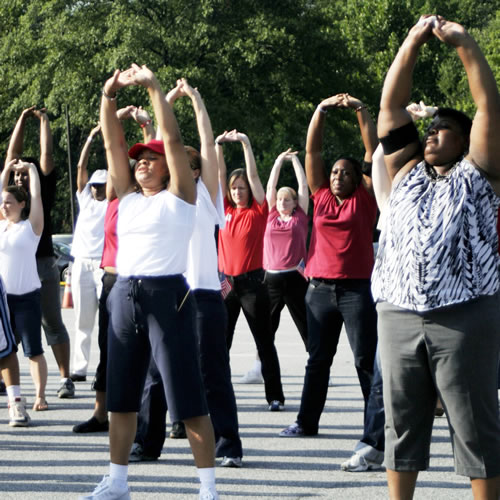 This FIG will take an interdisciplinary approach to examining current issues in health care and the delivery of care in various settings to diverse populations. Nursing 105: Health Care Systems: An Interdisciplinary Approach will focus on factors affecting health and the value placed on health, the delivery of health care in different settings, and the roles of various professionals in the healthcare system. Sociology 134: Sociology of Race and Ethnicity in the United States — This class examines social structures that shape and are shaped by race, ethnicity, racism, and racial/ethnic inequalities. You will learn to understand race and ethnicity as social constructs, and learn how race and ethnicity exist within social structures and institutions. Gender and Women’s Studies 103: Gender, Women, Bodies, and Health — Information on physiological processes and phenomena relating to health (for example, menstruation, pregnancy) and ill health (for example, cancer, maternal mortality, depression). Attention to how bodies are located in social contexts that influence health and illness. Explorations of how multiple kinds of social inequalities shape health and health disparities. Information on roles that female-assigned and women-identified people play as health-care consumers, activists, and practitioners. This FIG is designed for students considering an application to the Nursing Program in the School of Nursing; courses in this FIG have been carefully selected to fulfill requirements for the Nursing Program. Acceptance into the School of Nursing is dependent on a number of factors including completion of specific courses and meeting minimum grade-point average requirements. If you are interested in this academic path, please meet with an advisor from the School of Nursing to get full information. |
| 25fig65 | 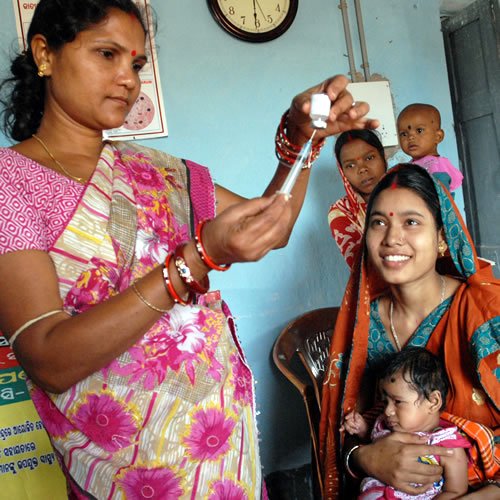 This FIG will take an interdisciplinary approach to examining current issues in health care and the delivery of care in various settings to diverse populations. Nursing 105: Health Care Systems: An Interdisciplinary Approach will focus on factors affecting health and the value placed on health, the delivery of health care in different settings, and the roles of various professionals in the healthcare system. Nutritional Sciences 203: Introduction to Global Health — Introduces you to global health concepts through multidisciplinary speakers dedicated to improving health through their unique training. It targets students with an interest in public health and those who wish to learn how their field impacts their global issues. Chemistry 103: General Chemistry I — Introduction to stoichiometry and the mole concept; the behavior of gases, liquids, and solids; thermochemistry; electronic structure of atoms and chemical bonding; descriptive chemistry of selected elements and compounds; and intermolecular forces. This FIG is designed for students considering an application to the Nursing Program in the School of Nursing; courses in this FIG have been carefully selected to fulfill requirements for the Nursing Program. Acceptance into the School of Nursing is dependent on a number of factors including completion of specific courses and meeting minimum grade-point average requirements. If you are interested in this academic path, please meet with an advisor from the School of Nursing to get full information. |
| 25fig66 | 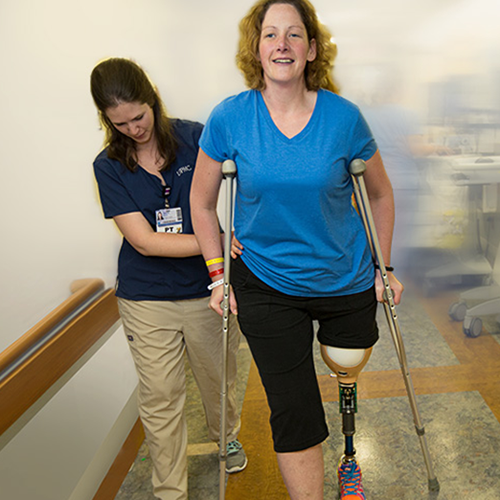 This FIG will take an interdisciplinary approach to examining current issues in health care and the delivery of care in various settings to diverse populations. Nursing 105: Health Care Systems: An Interdisciplinary Approach will focus on factors affecting health and the value placed on health, the delivery of health care in different settings, and the roles of various professionals in the healthcare system. Biology 101: Animal Biology — General biological principles. Topics include evolution, ecology, animal behavior, cell structure and function, genetics and molecular genetics, and the physiology of a variety of organ systems emphasizing function in humans. Kinesiology 150: Foundations of Health Behavior and Health Equity — Provides you with an overview of the personal, interpersonal and broader social factors that contribute to the health and well-being of individuals and populations in the United States. Examinations of contemporary approaches to health education and health behavior interventions including: foundations of health education and health behavior programs, health indicators, social and structural determinants of health and health disparities, and models of health education/health behavior that support interventions for individuals and communities. This FIG is designed for students considering an application to the Nursing Program in the School of Nursing; courses in this FIG have been carefully selected to fulfill requirements for the Nursing Program. Acceptance into the School of Nursing is dependent on a number of factors including completion of specific courses and meeting minimum grade-point average requirements. If you are interested in this academic path, please meet with an advisor from the School of Nursing to get full information. |
| 25fig67 |  This FIG will take an interdisciplinary approach to examining current issues in health care and the delivery of care in various settings to diverse populations. Nursing 105: Health Care Systems: An Interdisciplinary Approach will focus on factors affecting health and the value placed on health, the delivery of health care in different settings, and the roles of various professionals in the healthcare system. Mathematics 112: Algebra — This class introduces polynomial equations, remainder and factor theorems, functions, graphs of functions, simultaneous linear equations, logarithm and exponential functions, sequences and series, mathematical induction, binomial theorem. Counseling Psychology 237: Mental Health, Self-Awareness, and Social Justice: Working in Diverse Communities — This class is designed to increase the knowledge, awareness, and skills of students interested in working on mental health matters within diverse identity groups and communities. Conceptualize mental health and well-being across communities in terms of (a) intersectional identities (individual and groups), (b) mental health and access and utilization of services, and (c) social determinants of health in different contexts and settings. Engage in reflective exercises to understand how their social identities influence their work in different types of communities. This FIG is designed for students considering an application to the Nursing Program in the School of Nursing; courses in this FIG have been carefully selected to fulfill requirements for the Nursing Program. Acceptance into the School of Nursing is dependent on a number of factors including completion of specific courses and meeting minimum grade-point average requirements. If you are interested in this academic path, please meet with an advisor from the School of Nursing to get full information. |
| 25fig68 |  Are you considering a career as a pharmacist? Would you like to learn more about the variety of pharmacist roles, responsibilities and career settings? Are you curious about how medications can be used to prevent and treat health conditions and improve human health? In Pharmacy 125: Exploring Pharmacy I we will consider:
Class time will include regular discussion and integration of the linked classes’ content as well as use of guest instructors, readings, videos, and reflective assignments. First-year pharmacy students serve as mentors, offering support and guidance to help ensure you have a smooth transition to college and gain exposure to pharmacy school as they share their student perspectives and experiences. The class will be reflective and interactive in nature to help you enhance your communication, critical thinking, and problem-solving skills. Anthropology 104: Cultural Anthropology and Human Diversity — A comparative cross-cultural consideration of social organization, economics, politics, language, religion, ecology, gender, and cultural change. Choose one of the following: Chemistry 103: General Chemistry I — Stoichiometry and the mole concept, the behavior of gases, liquids and solids, thermochemistry, electronic structure of atoms and chemical bonding, descriptive chemistry of selected elements and compounds, intermolecular forces, and chemistry laboratory skills. Chemistry 109: Advanced General Chemistry — Accelerated coverage of topics in general chemistry, including introduction to laboratory techniques. Topics include atomic and molecular structure, chemical equilibrium, acid-base chemistry, thermodynamics, kinetics, and electrochemistry. |
| 25fig69 |  Are you considering a career as a pharmacist? Would you like to learn more about the variety of pharmacist roles, responsibilities and career settings? Are you curious about how medications can be used to prevent and treat health conditions and improve human health? In Pharmacy 125: Exploring Pharmacy I we will consider:
Class time will include regular discussion and integration of the linked classes’ content as well as use of guest instructors, readings, videos, and reflective assignments. First-year pharmacy students serve as mentors, offering support and guidance to help ensure you have a smooth transition to college and gain exposure to pharmacy school as they share their student perspectives and experiences. The class will be reflective and interactive in nature to help you enhance your communication, critical thinking, and problem-solving skills. Anthropology 104: Cultural Anthropology and Human Diversity — A comparative cross-cultural consideration of social organization, economics, politics, language, religion, ecology, gender, and cultural change. Choose one of the following: Chemistry 103: General Chemistry I — Stoichiometry and the mole concept, the behavior of gases, liquids and solids, thermochemistry, electronic structure of atoms and chemical bonding, descriptive chemistry of selected elements and compounds, intermolecular forces, and chemistry laboratory skills. Chemistry 109: Advanced General Chemistry — Accelerated coverage of topics in general chemistry, including introduction to laboratory techniques. Topics include atomic and molecular structure, chemical equilibrium, acid-base chemistry, thermodynamics, kinetics, and electrochemistry. |
| fig | description |